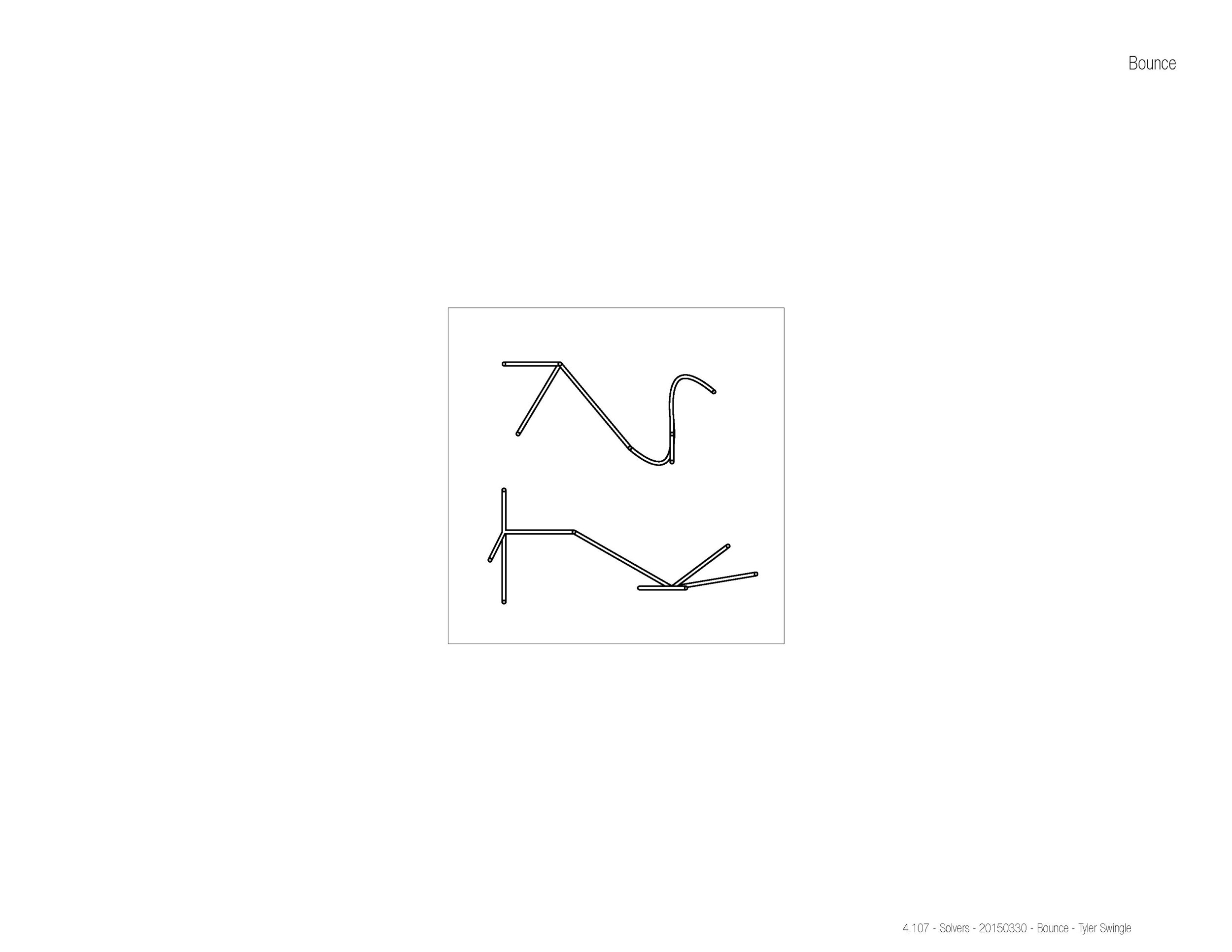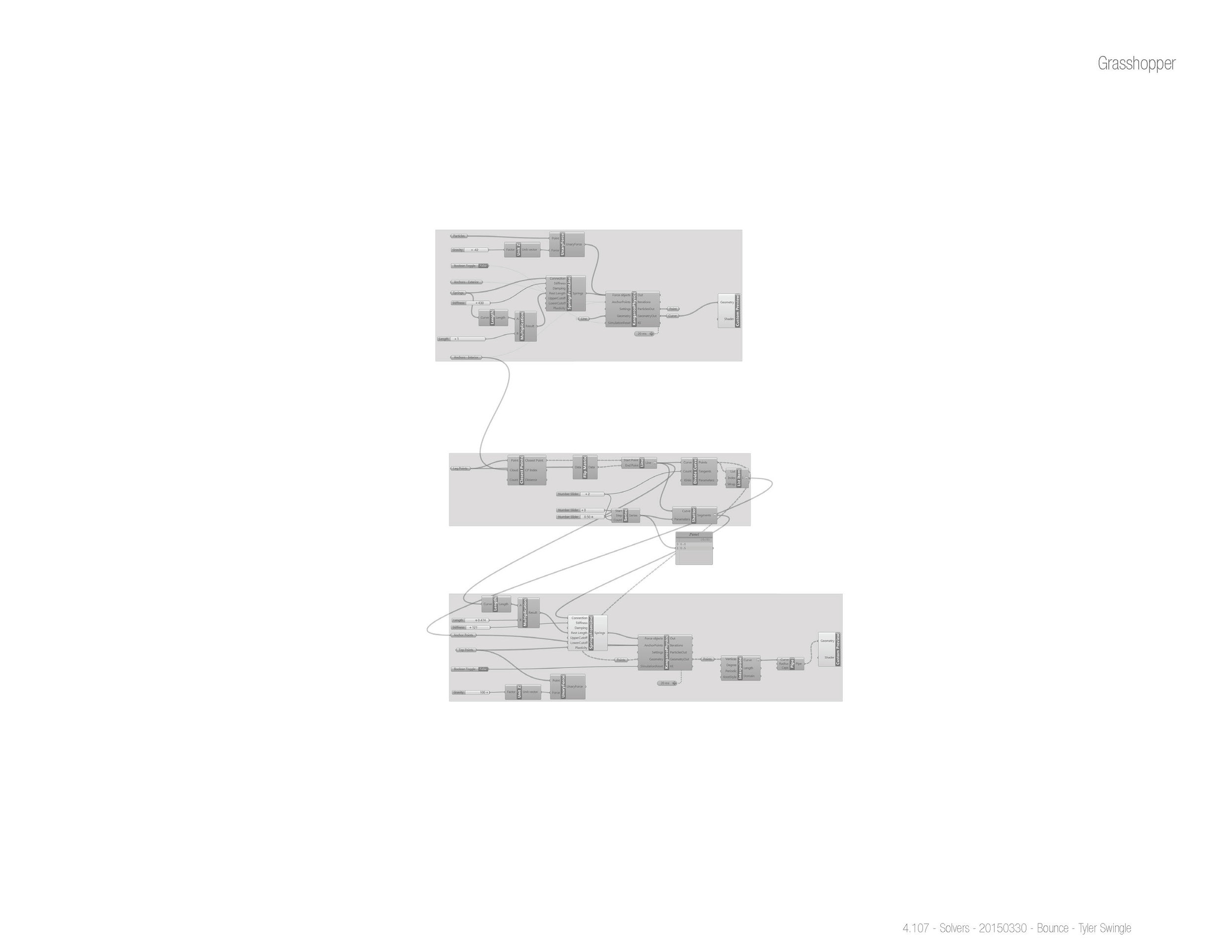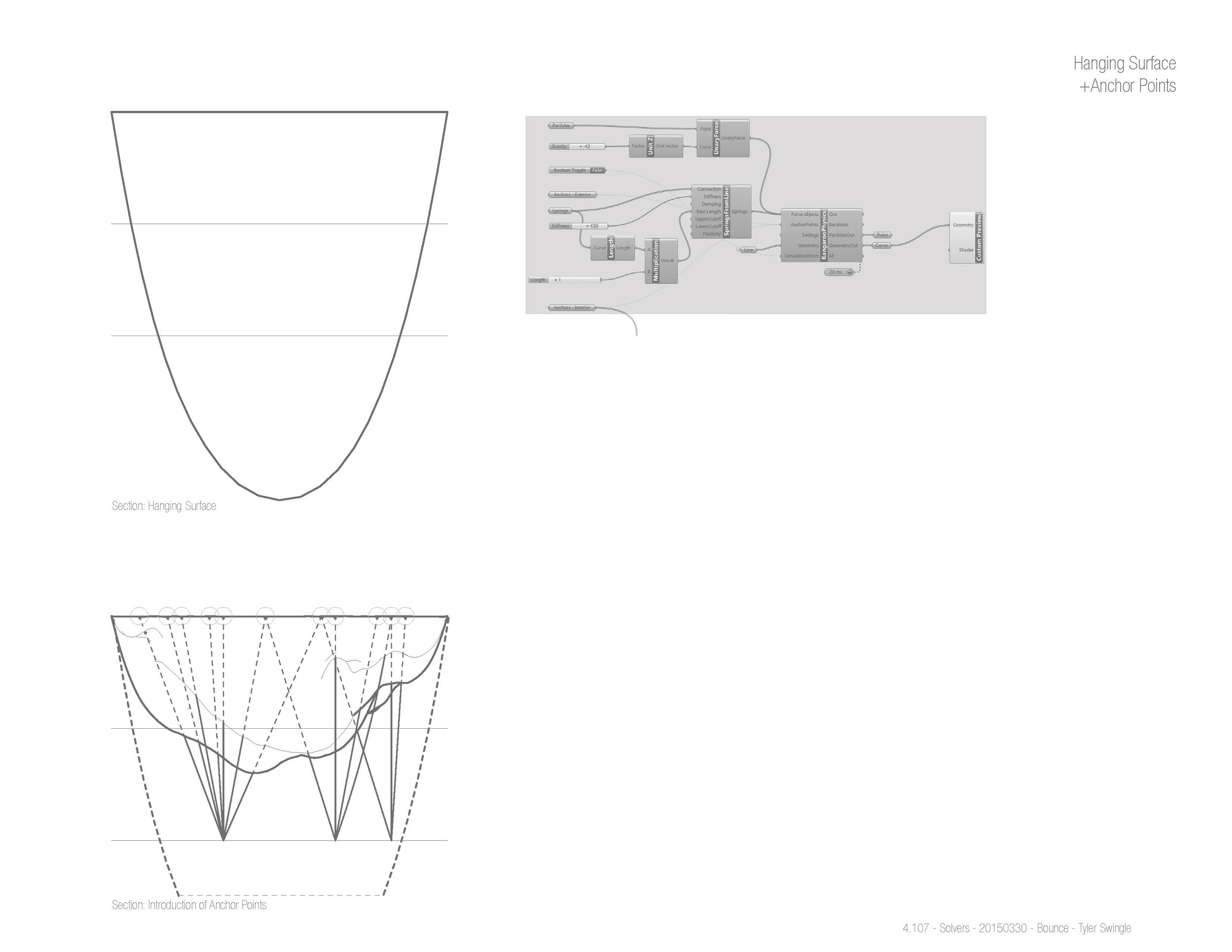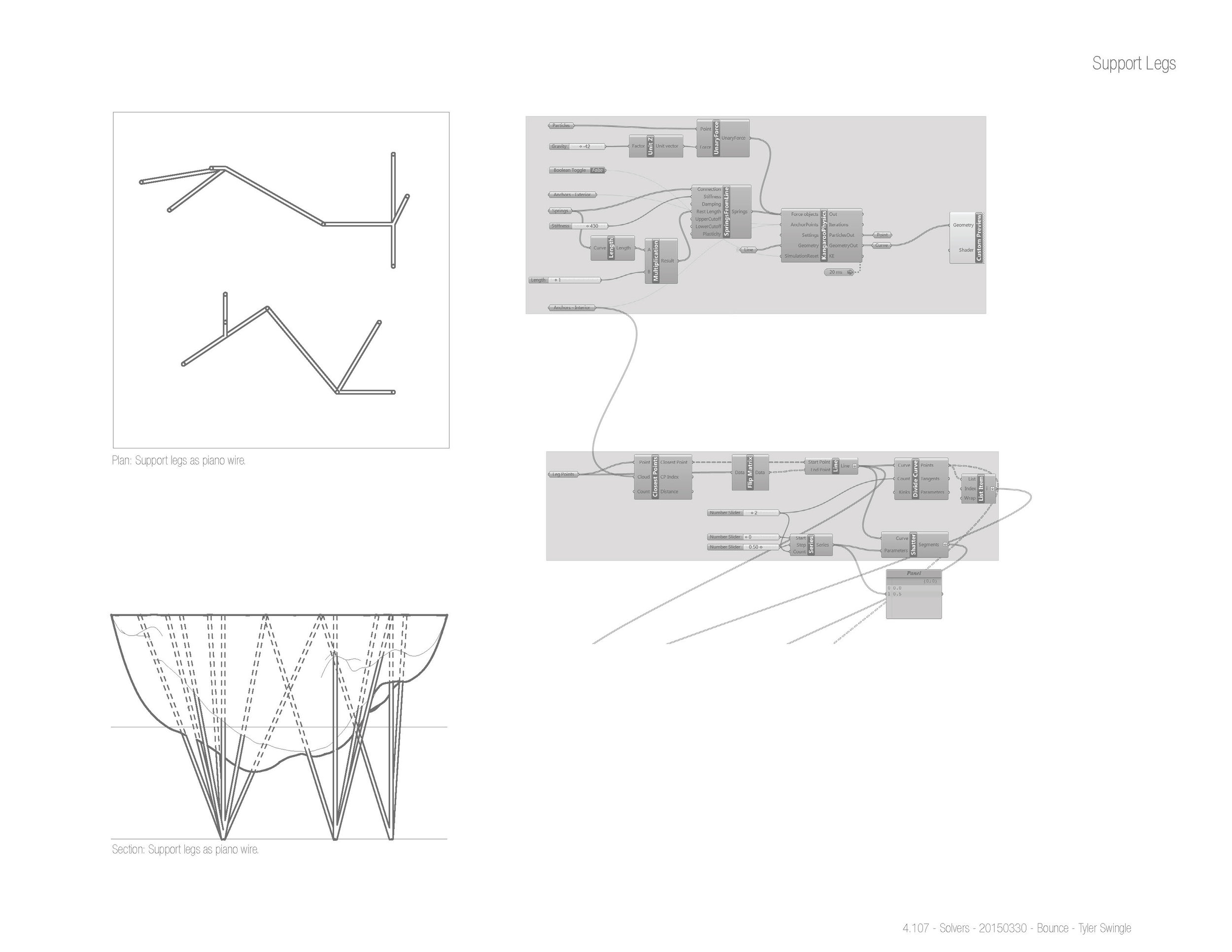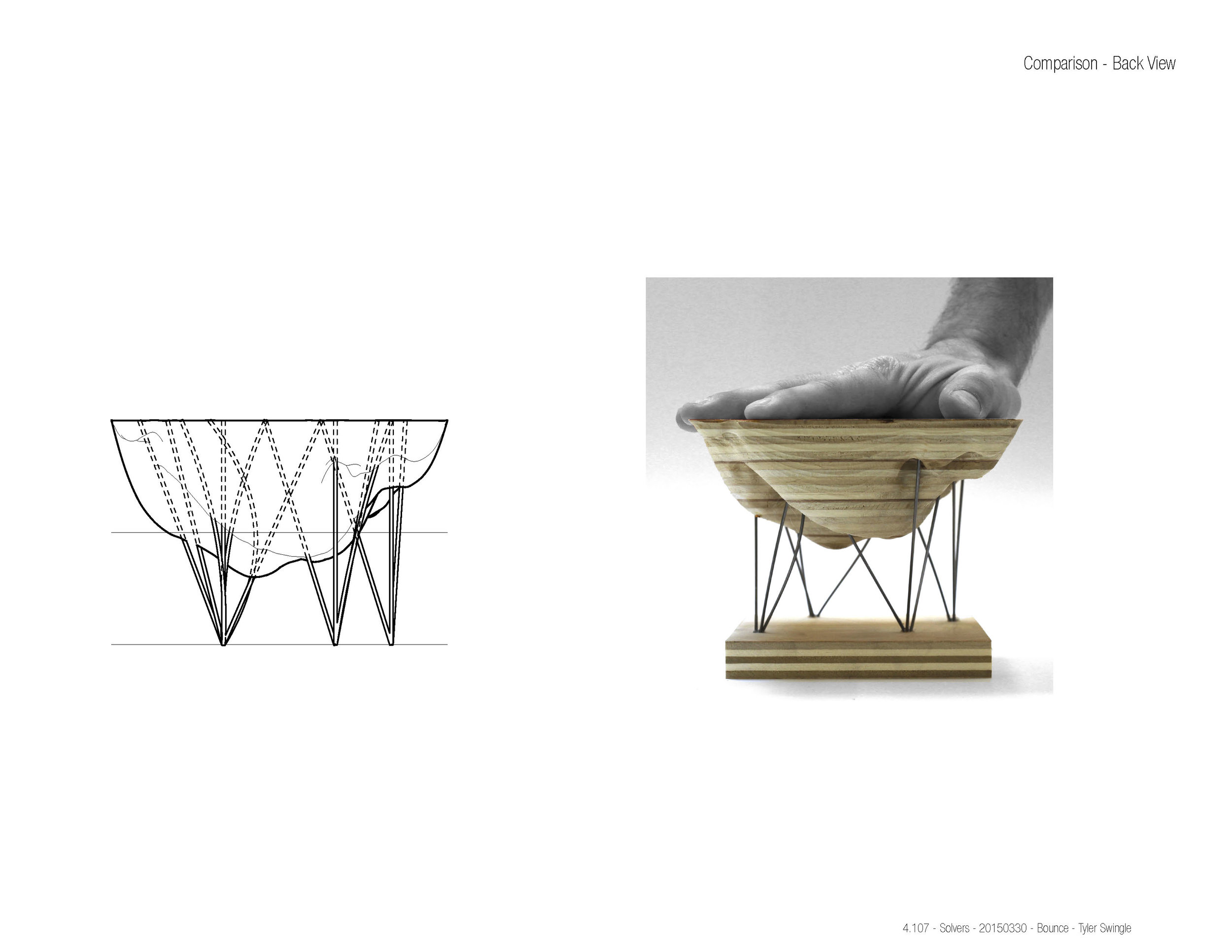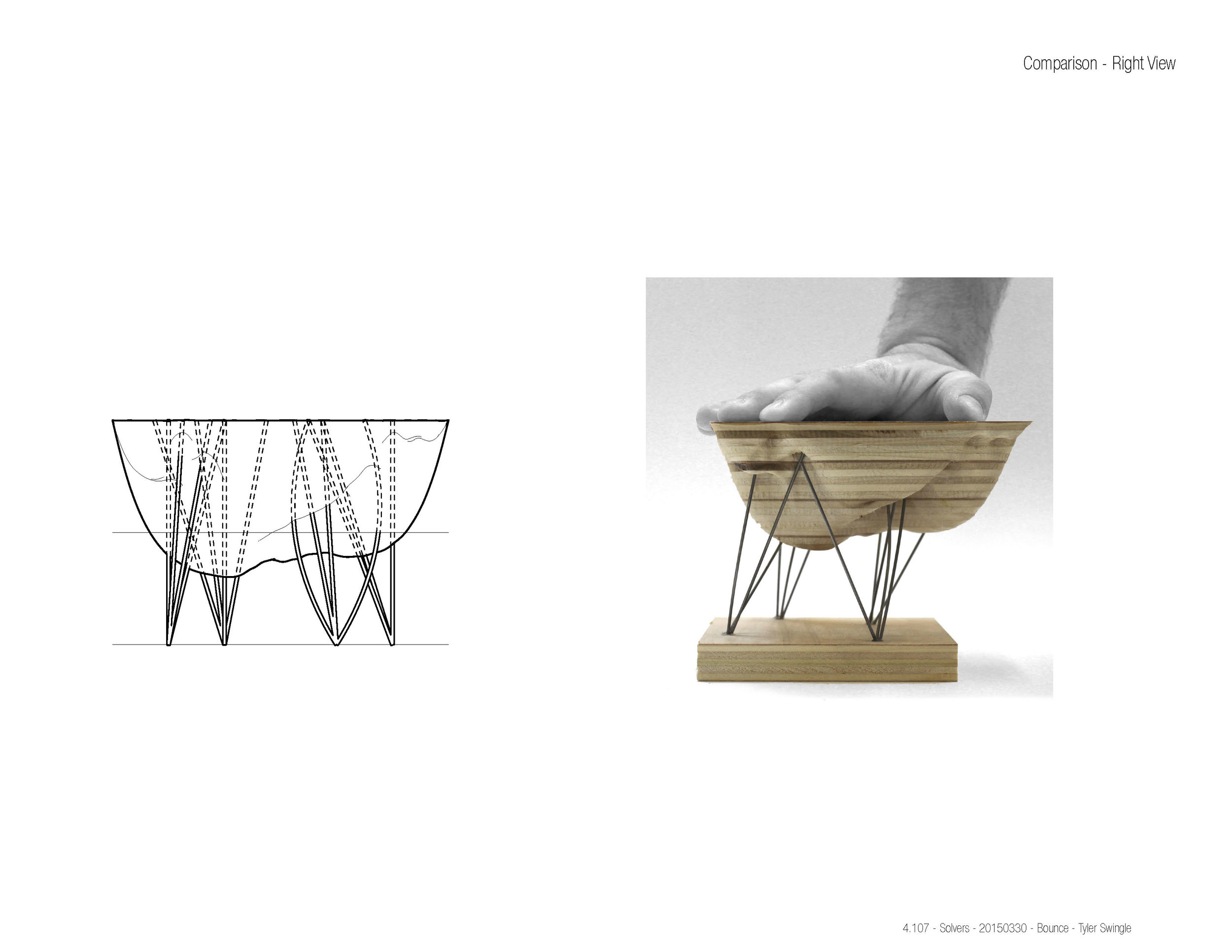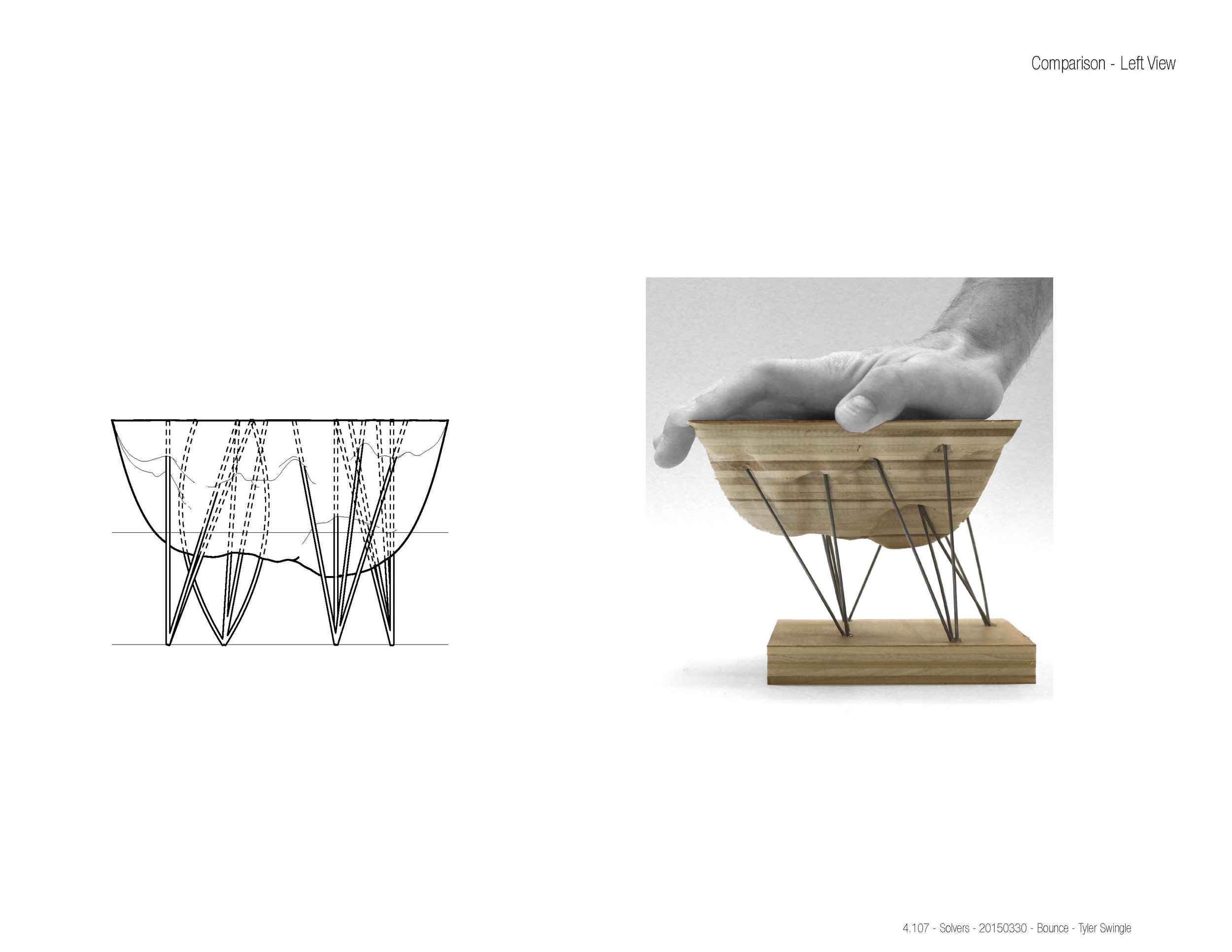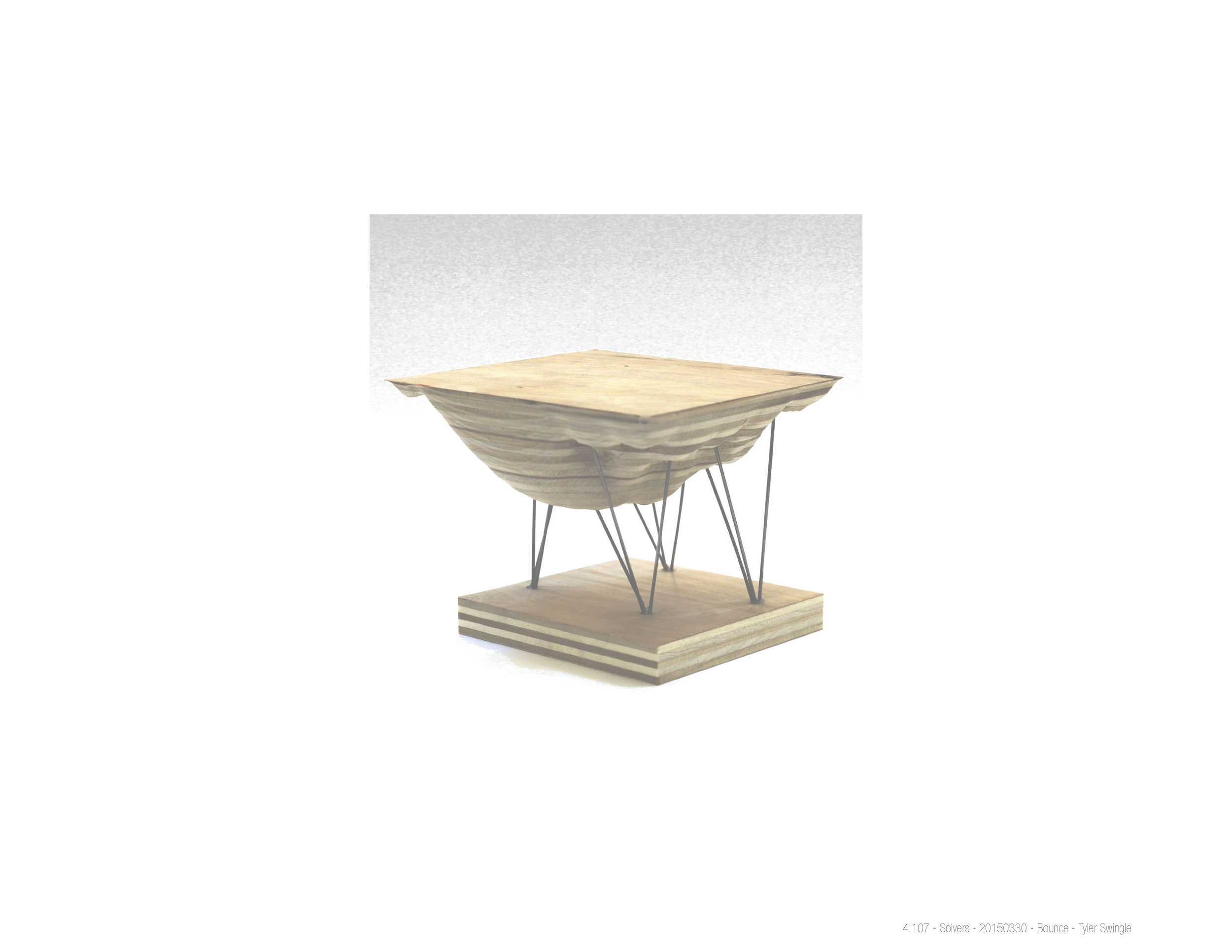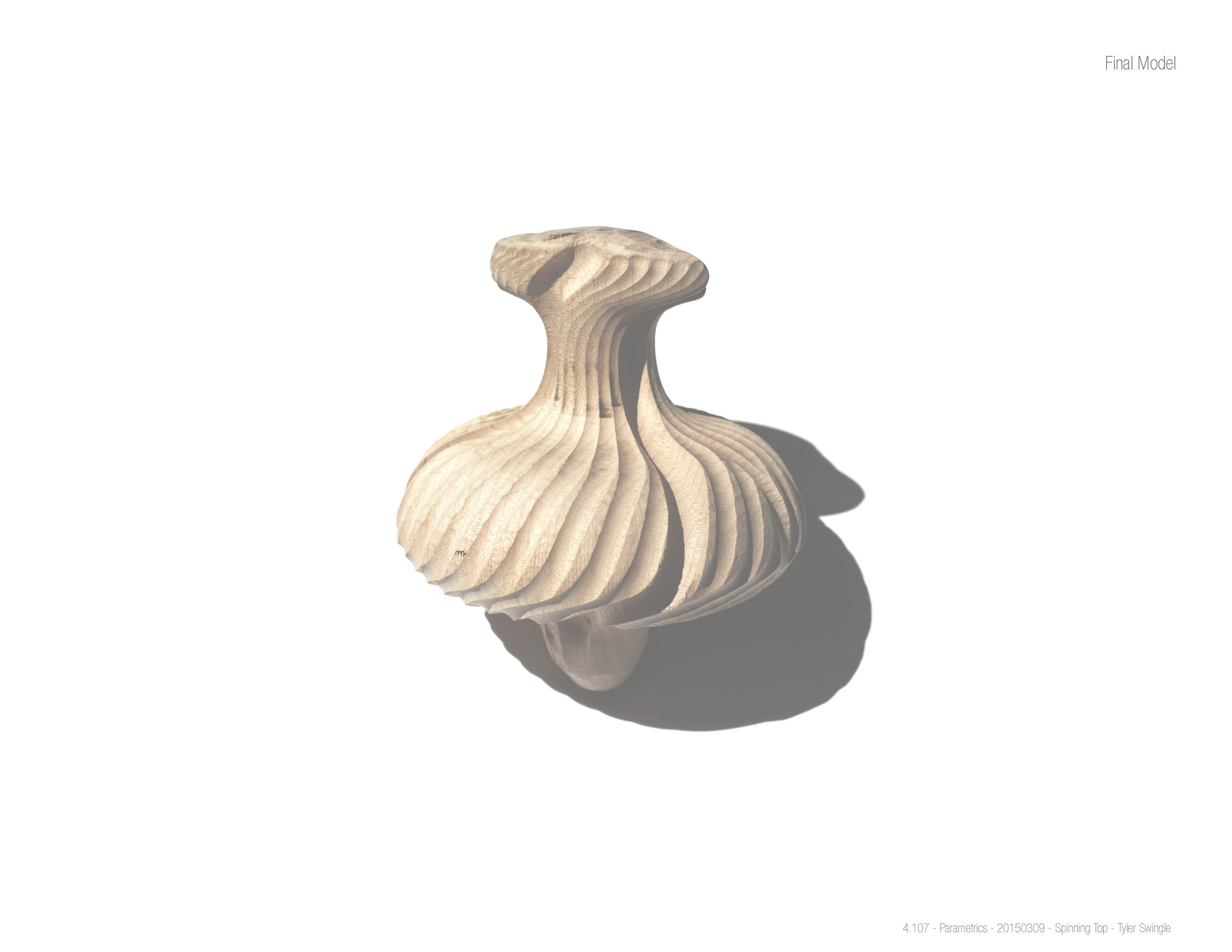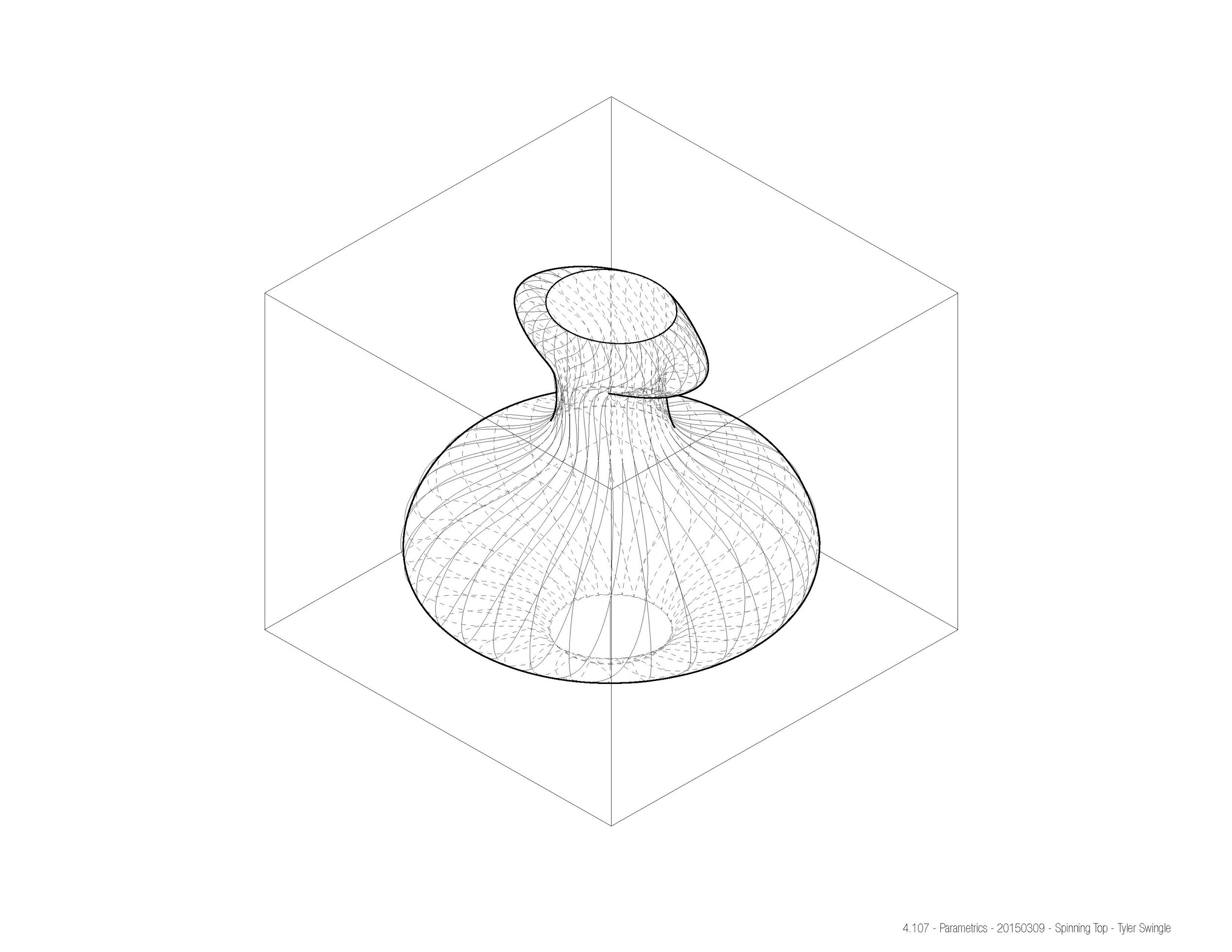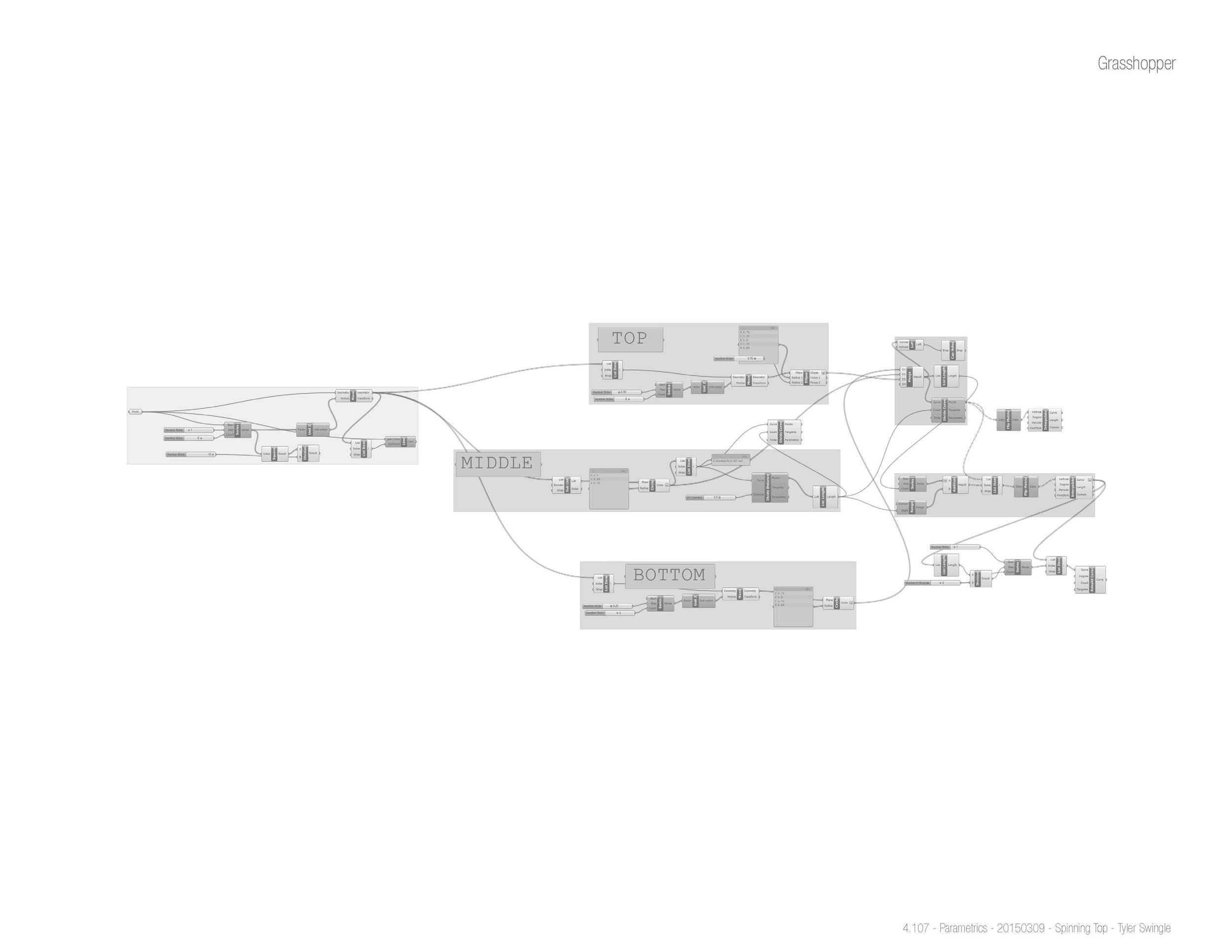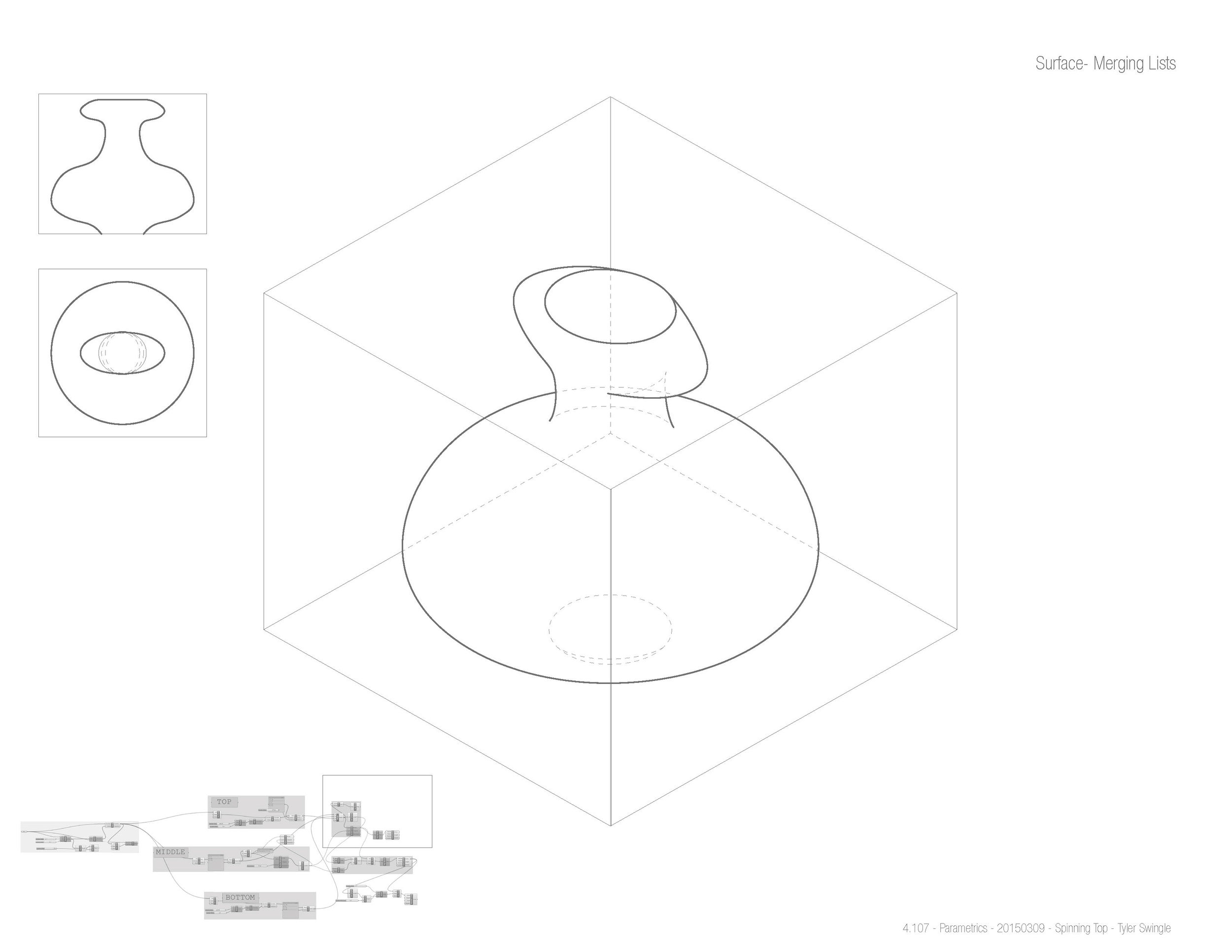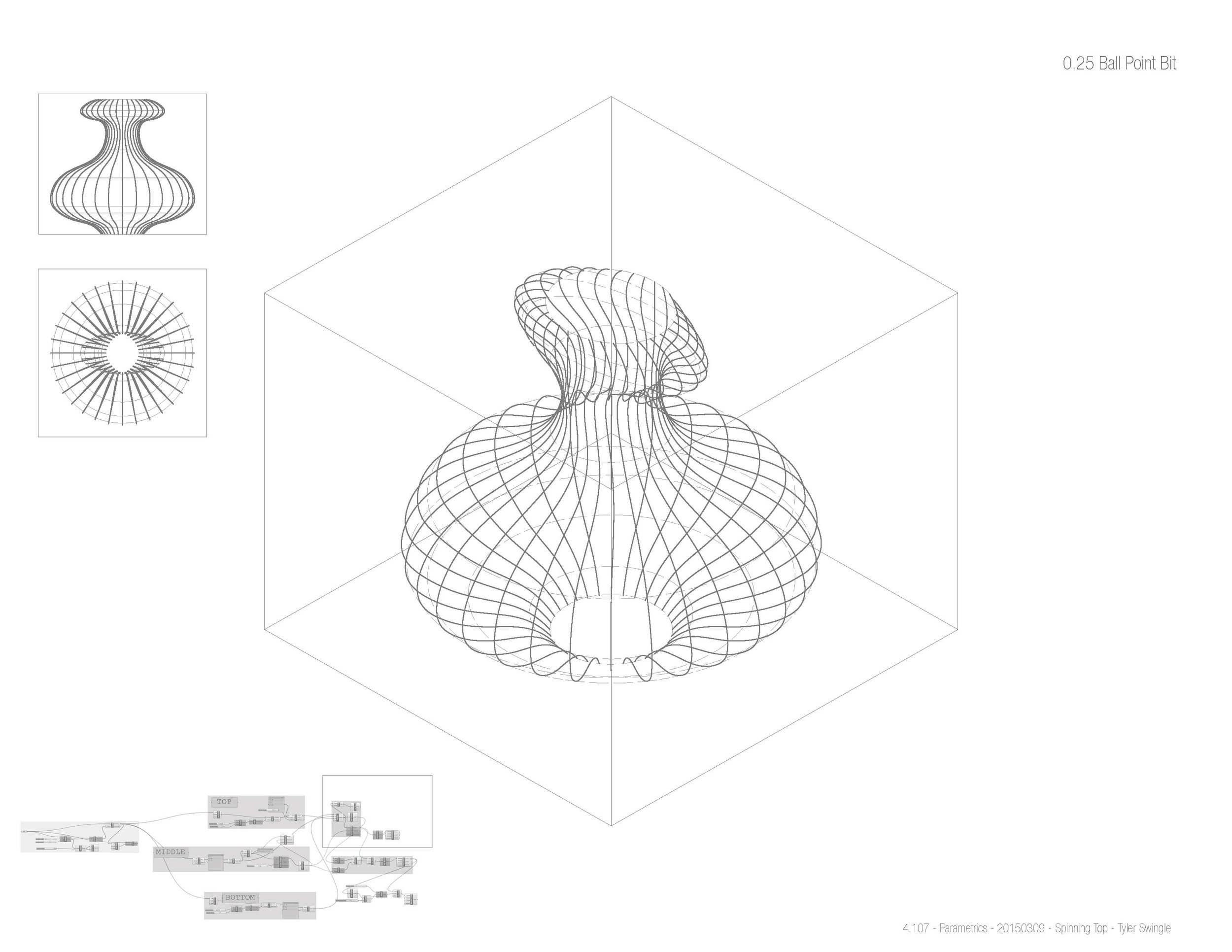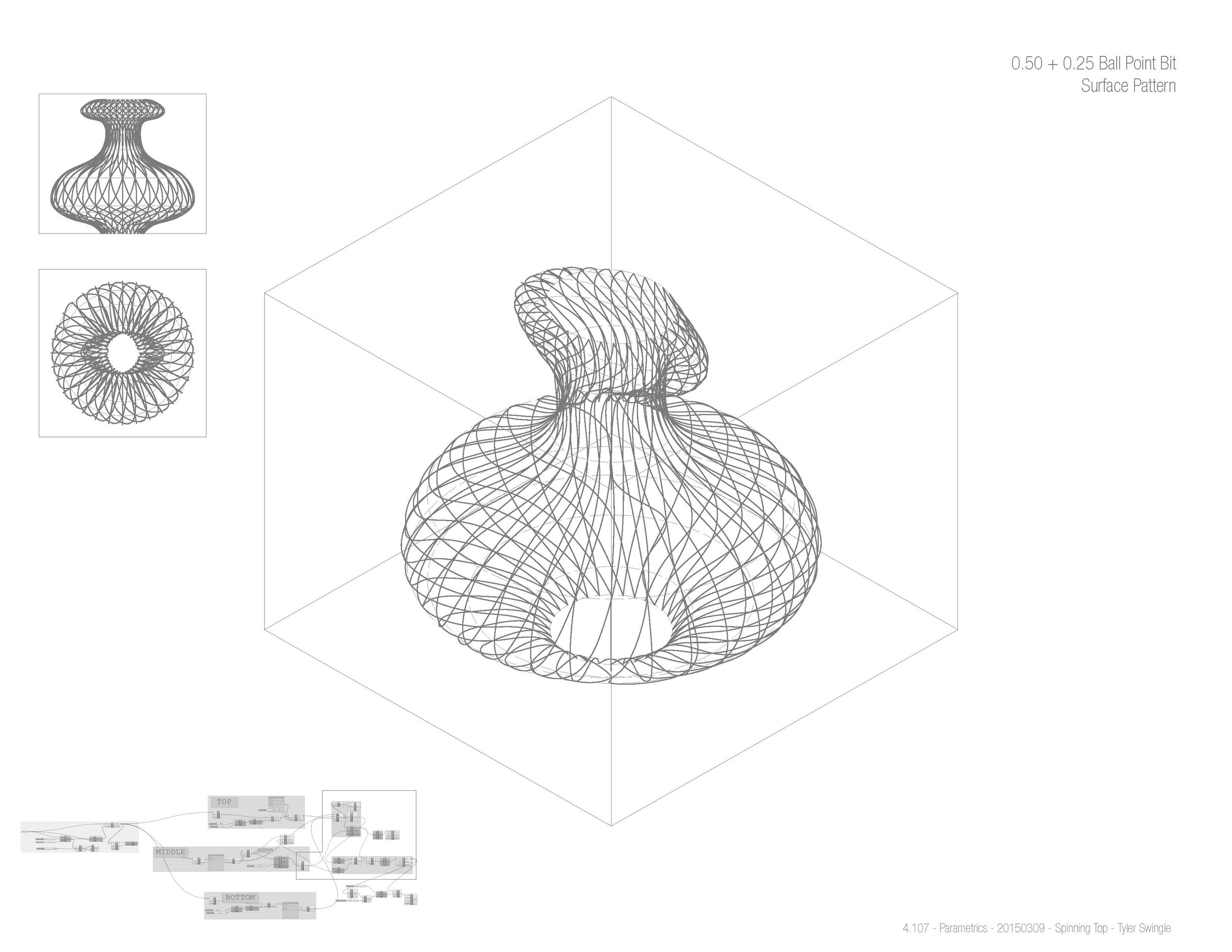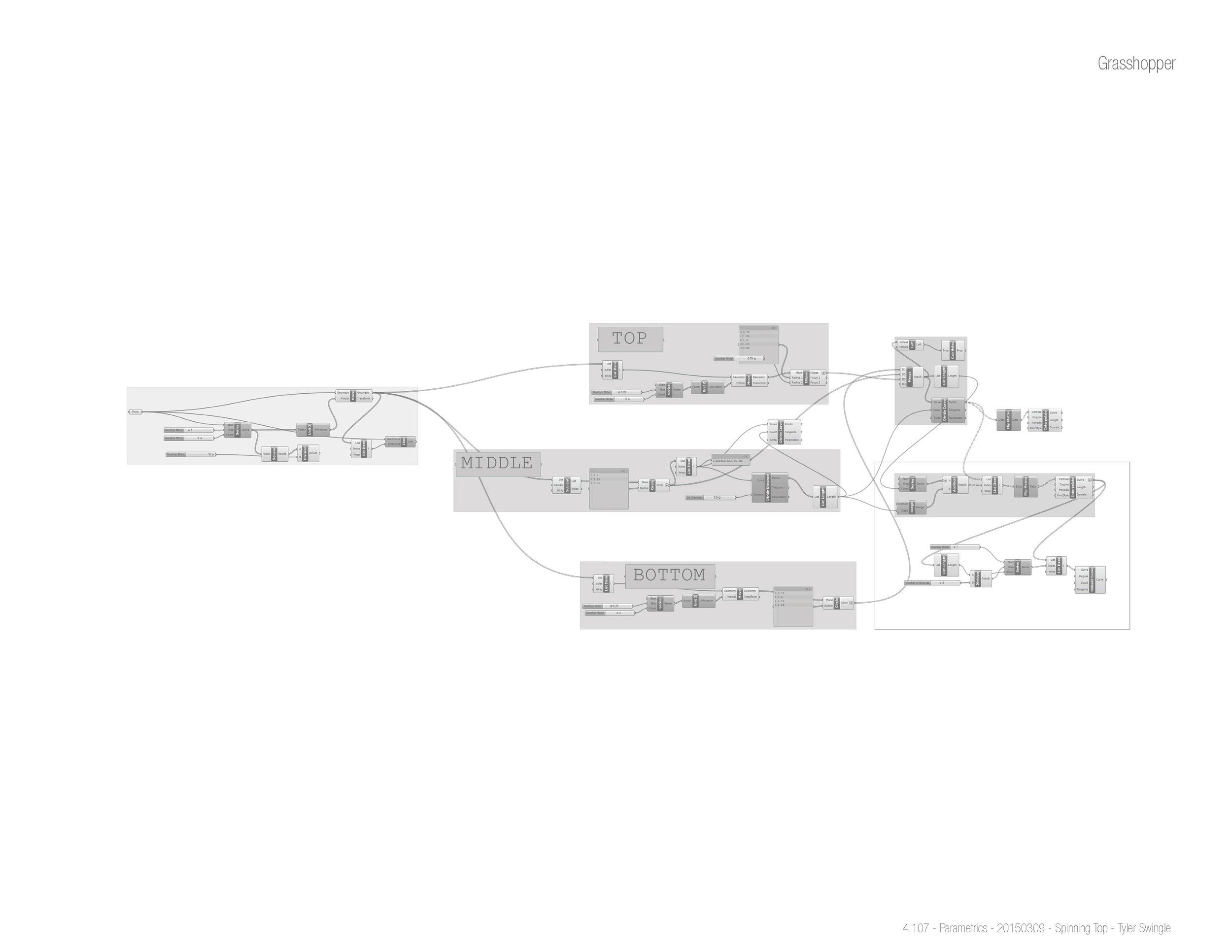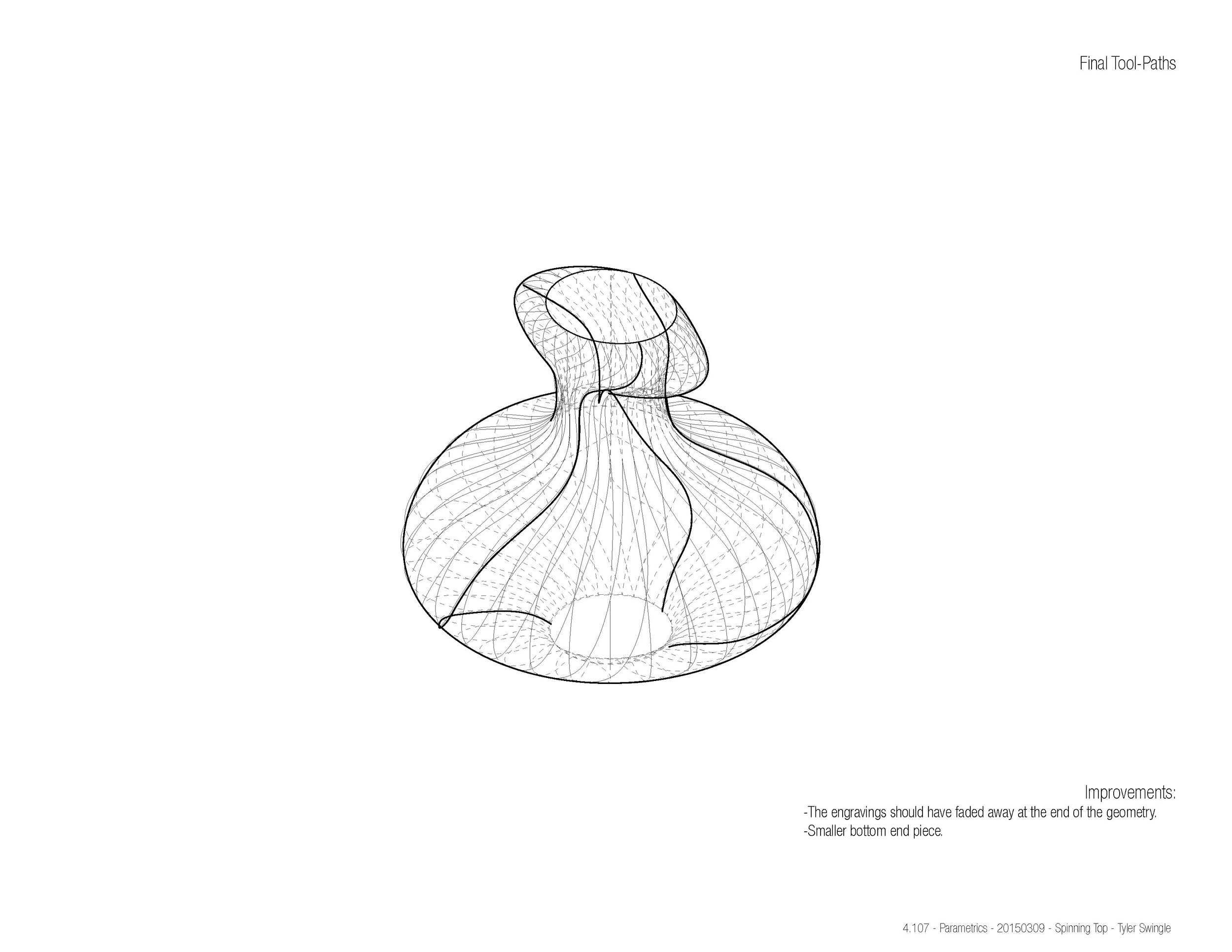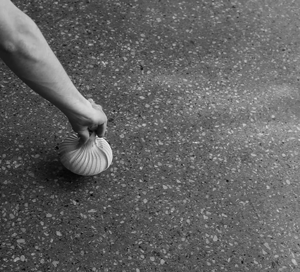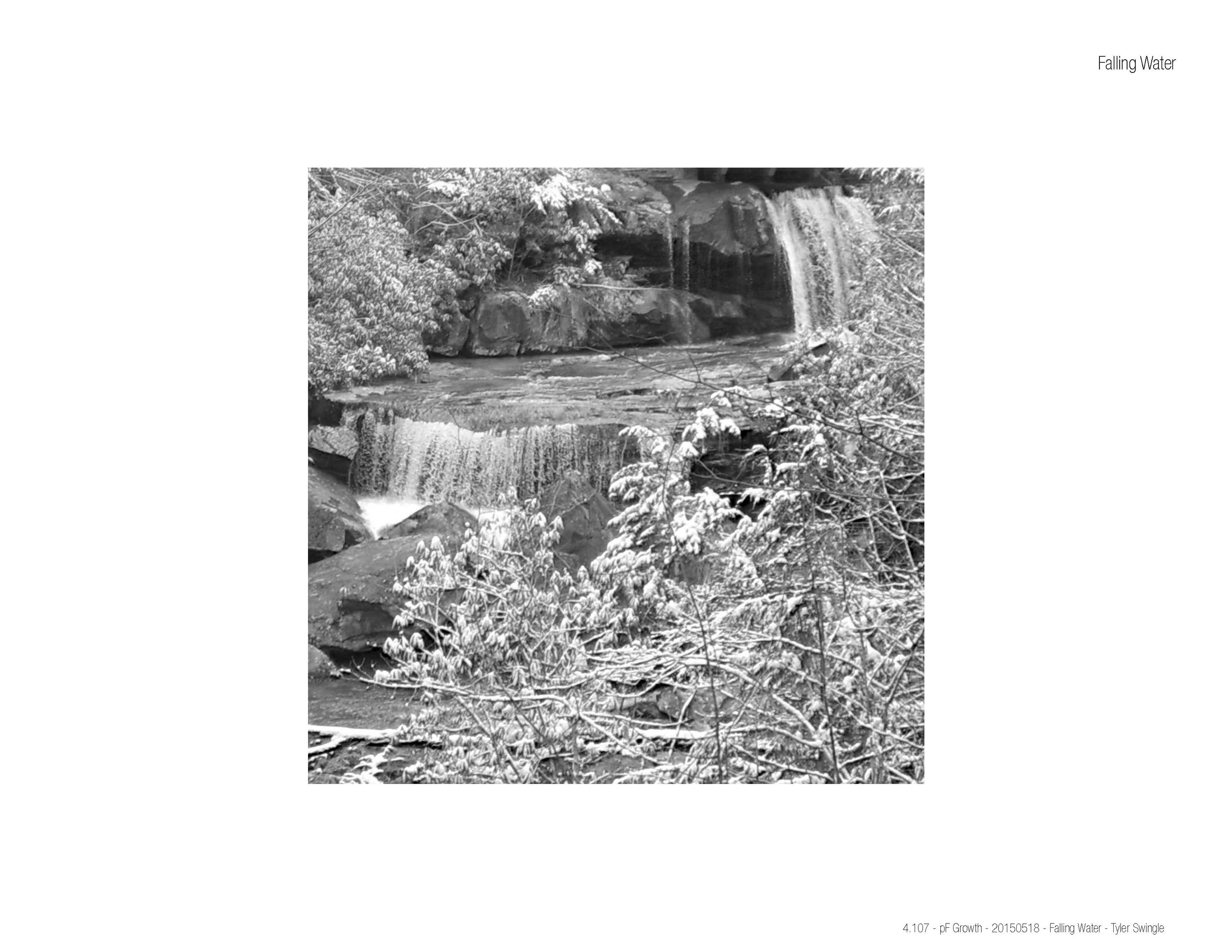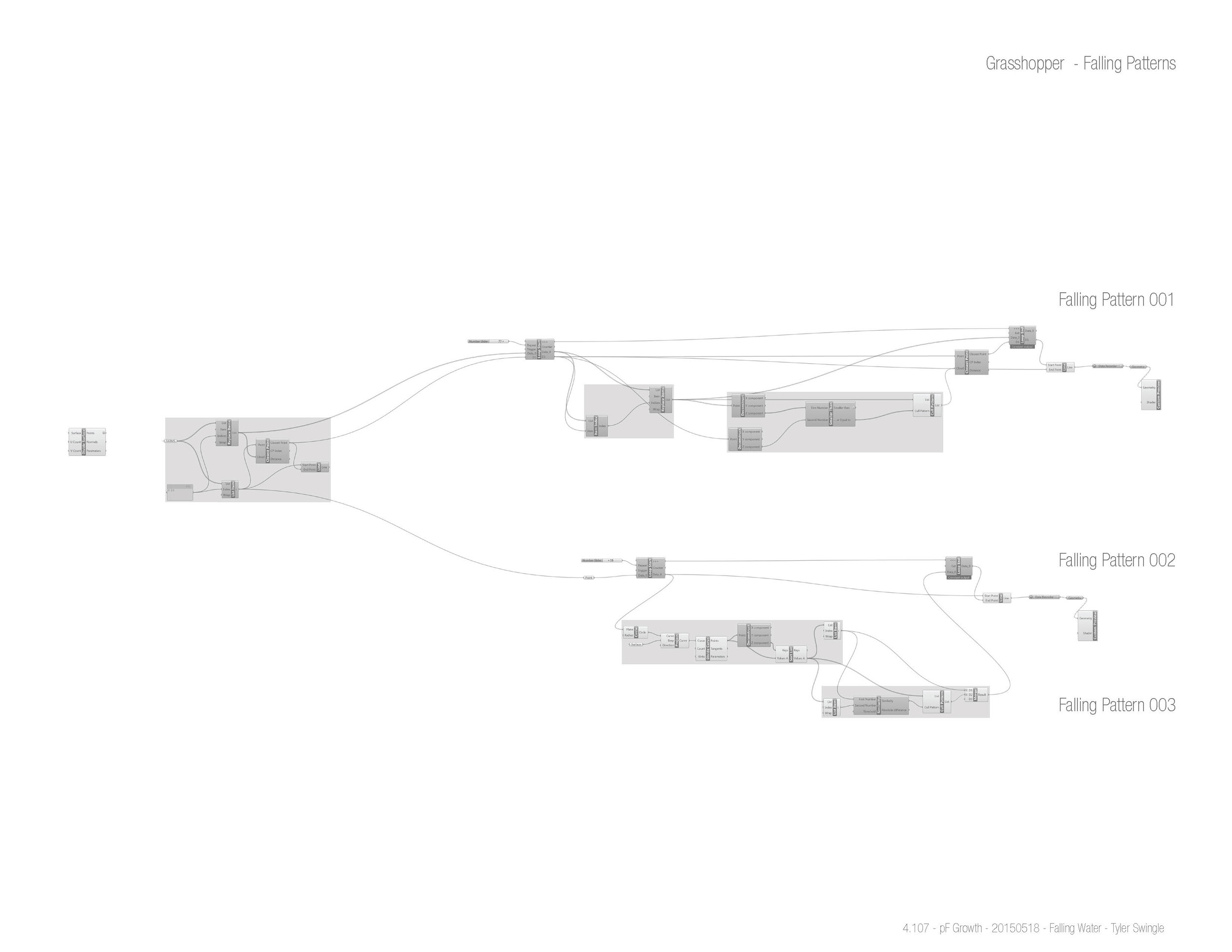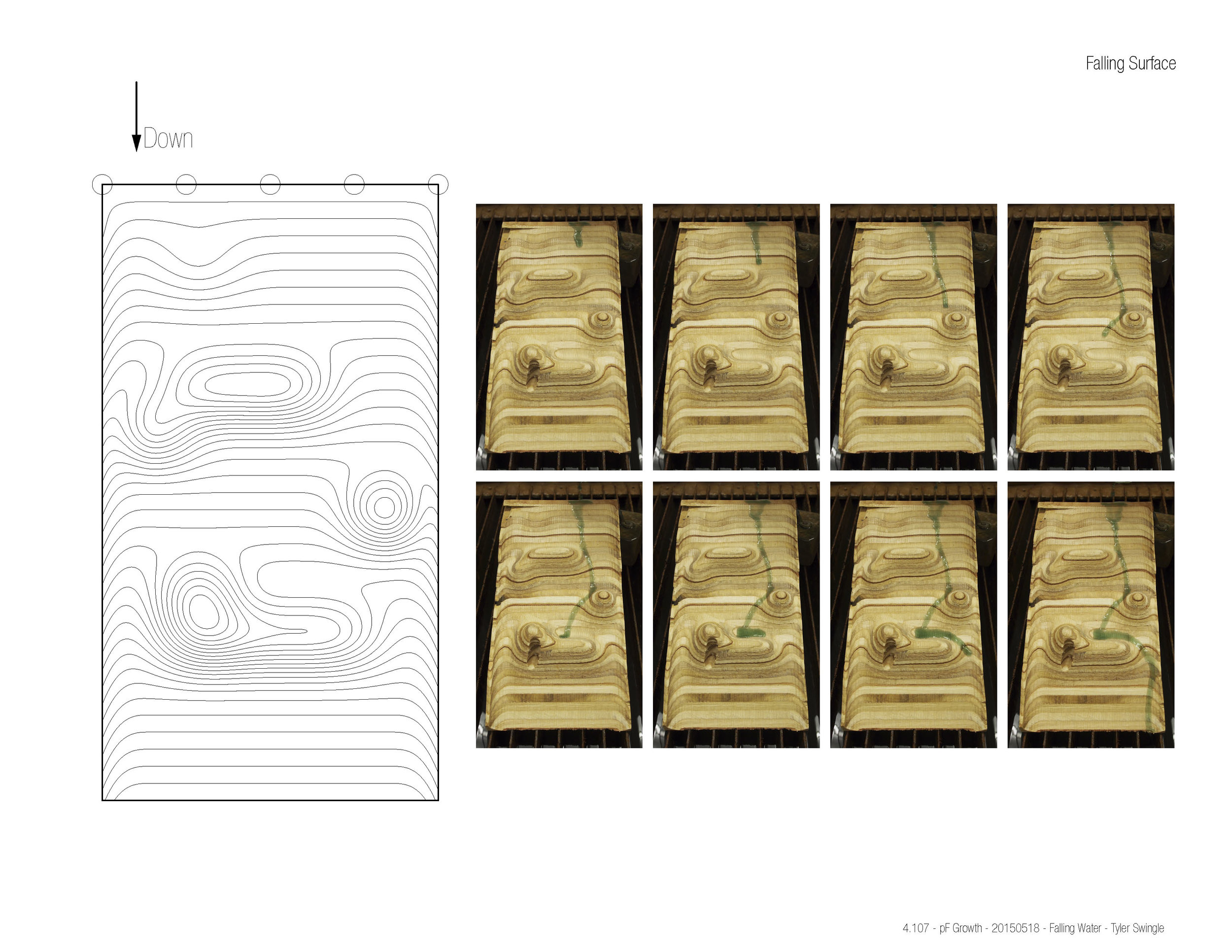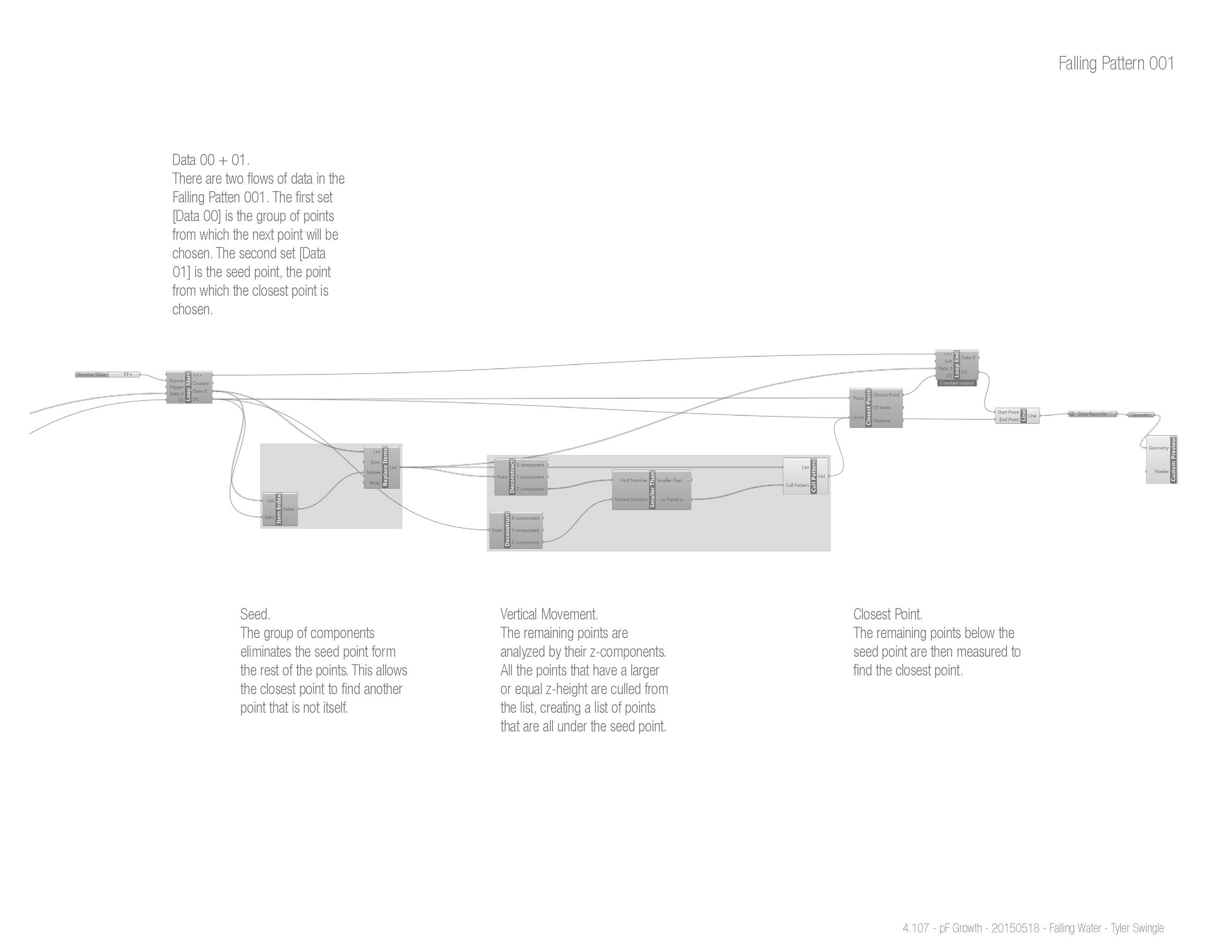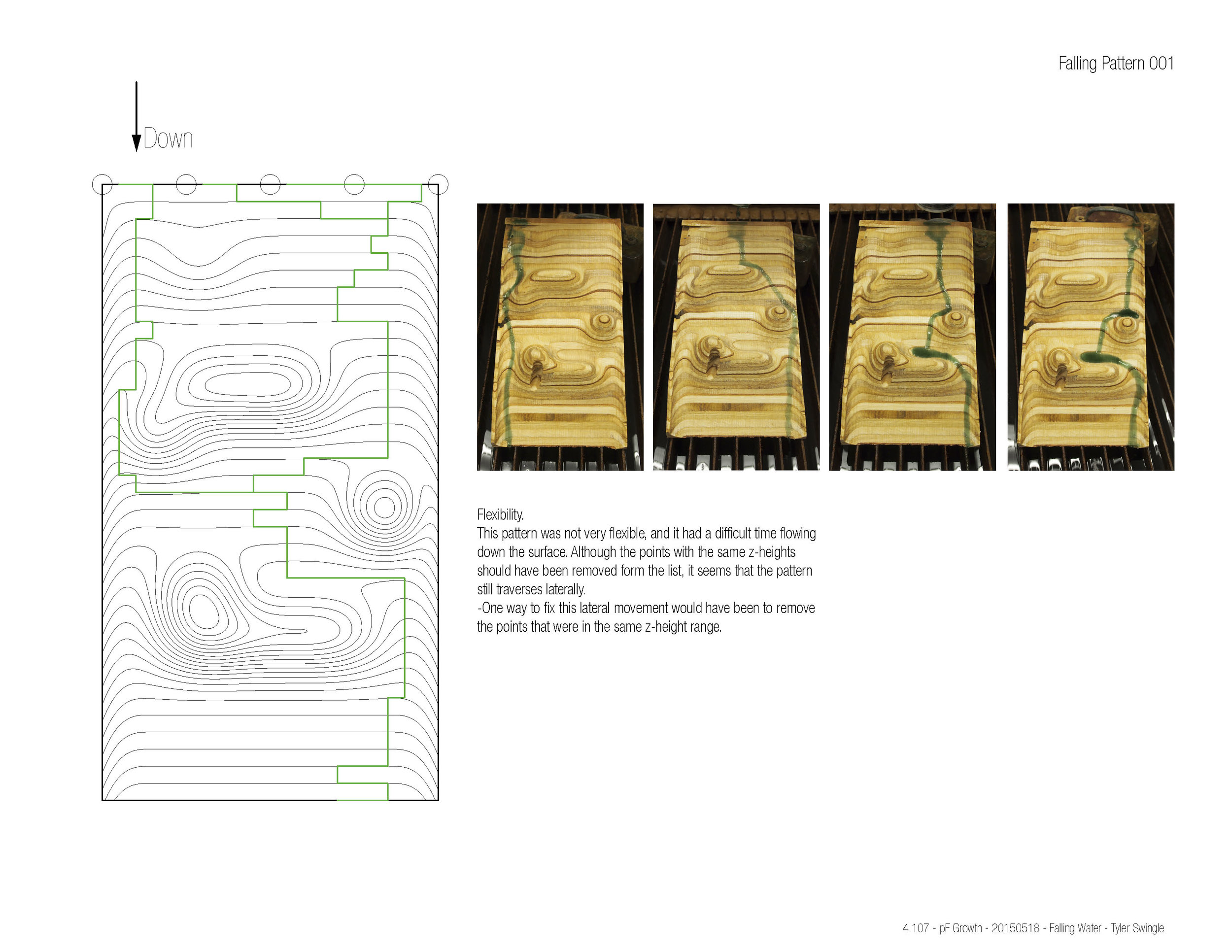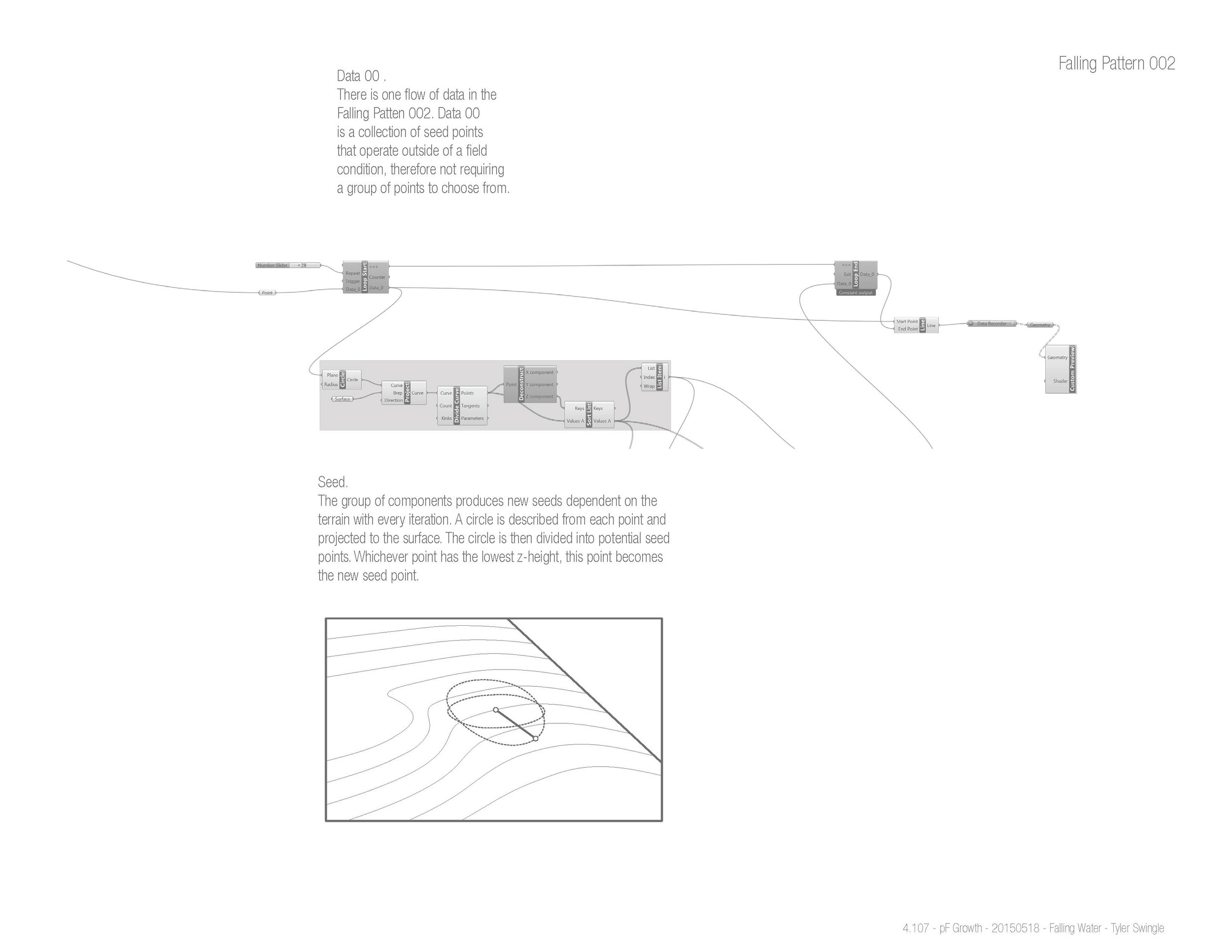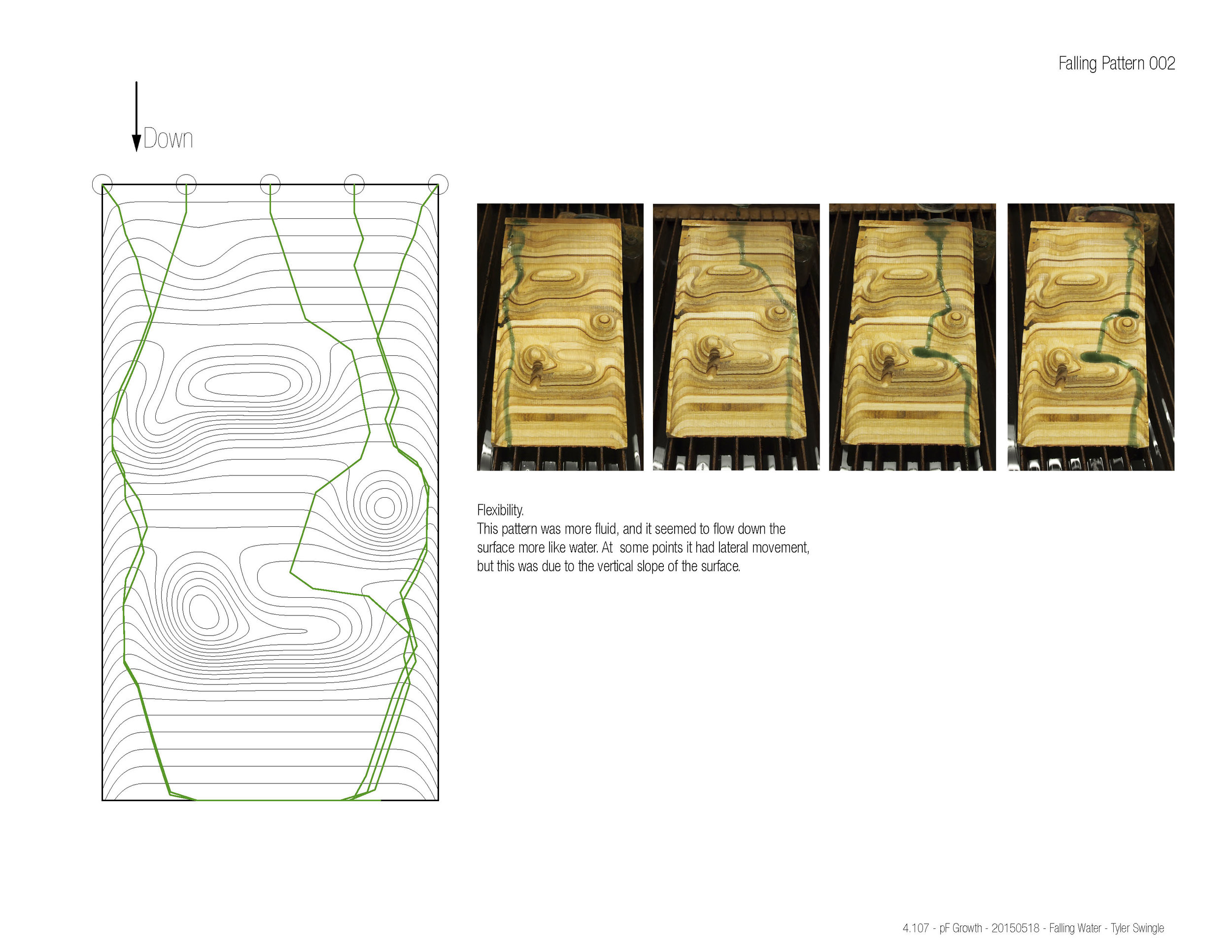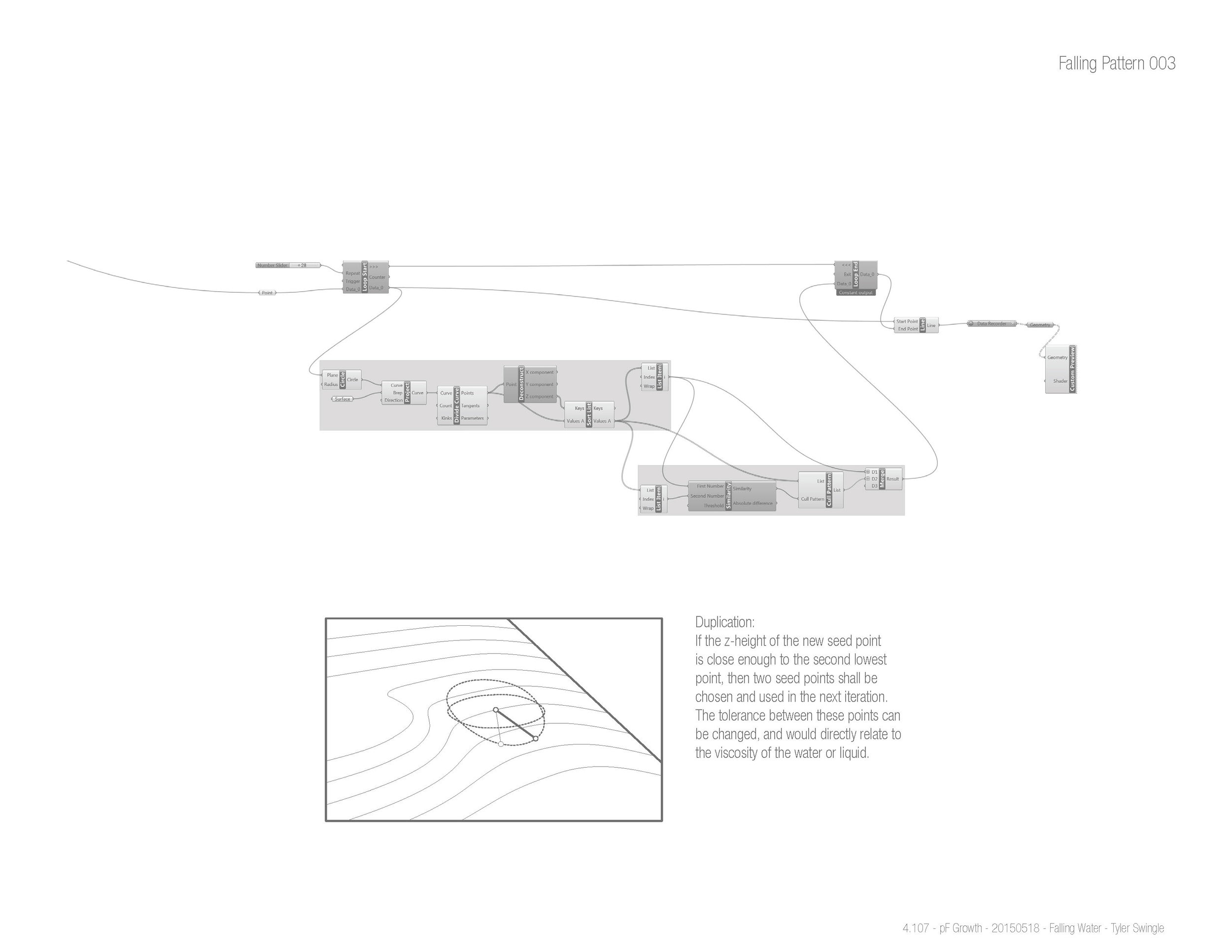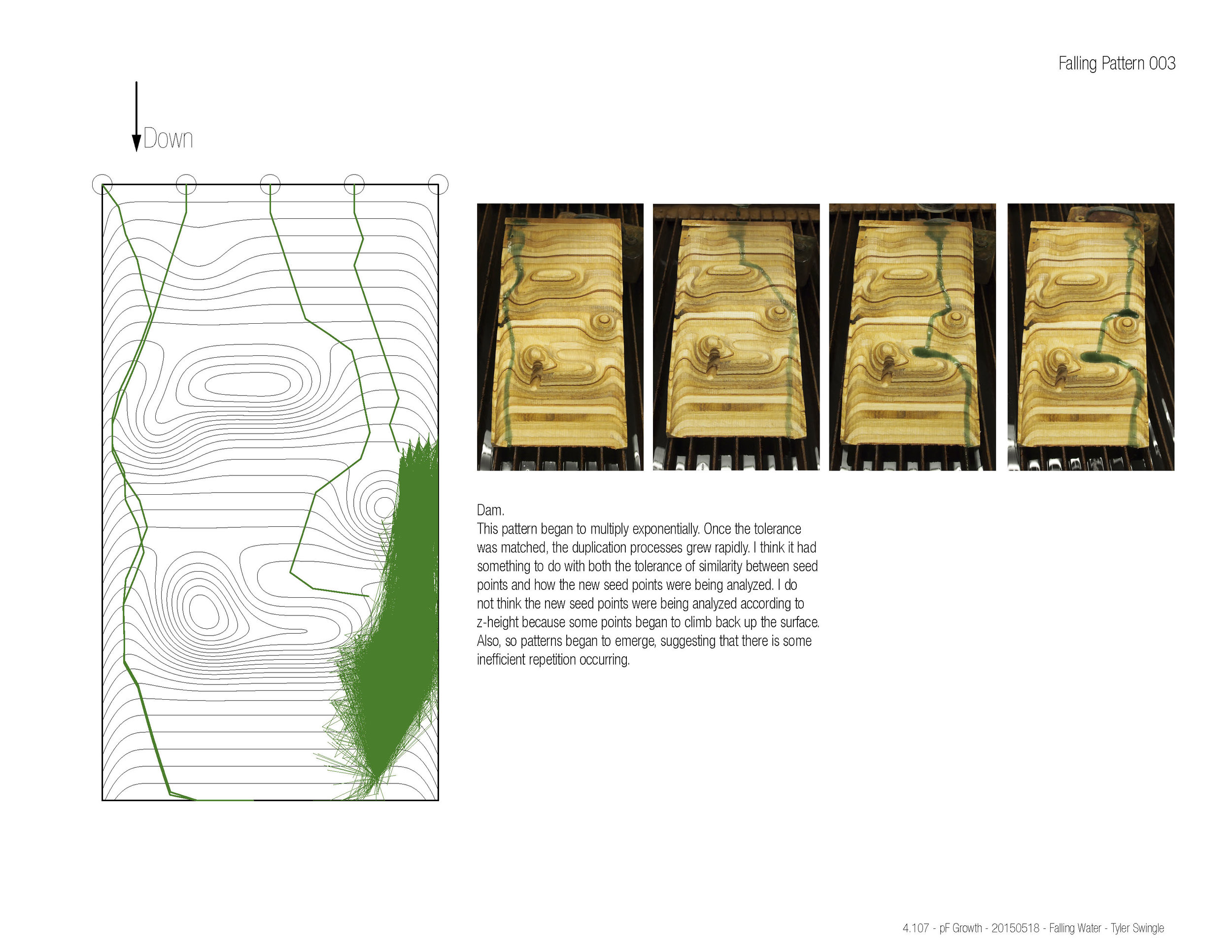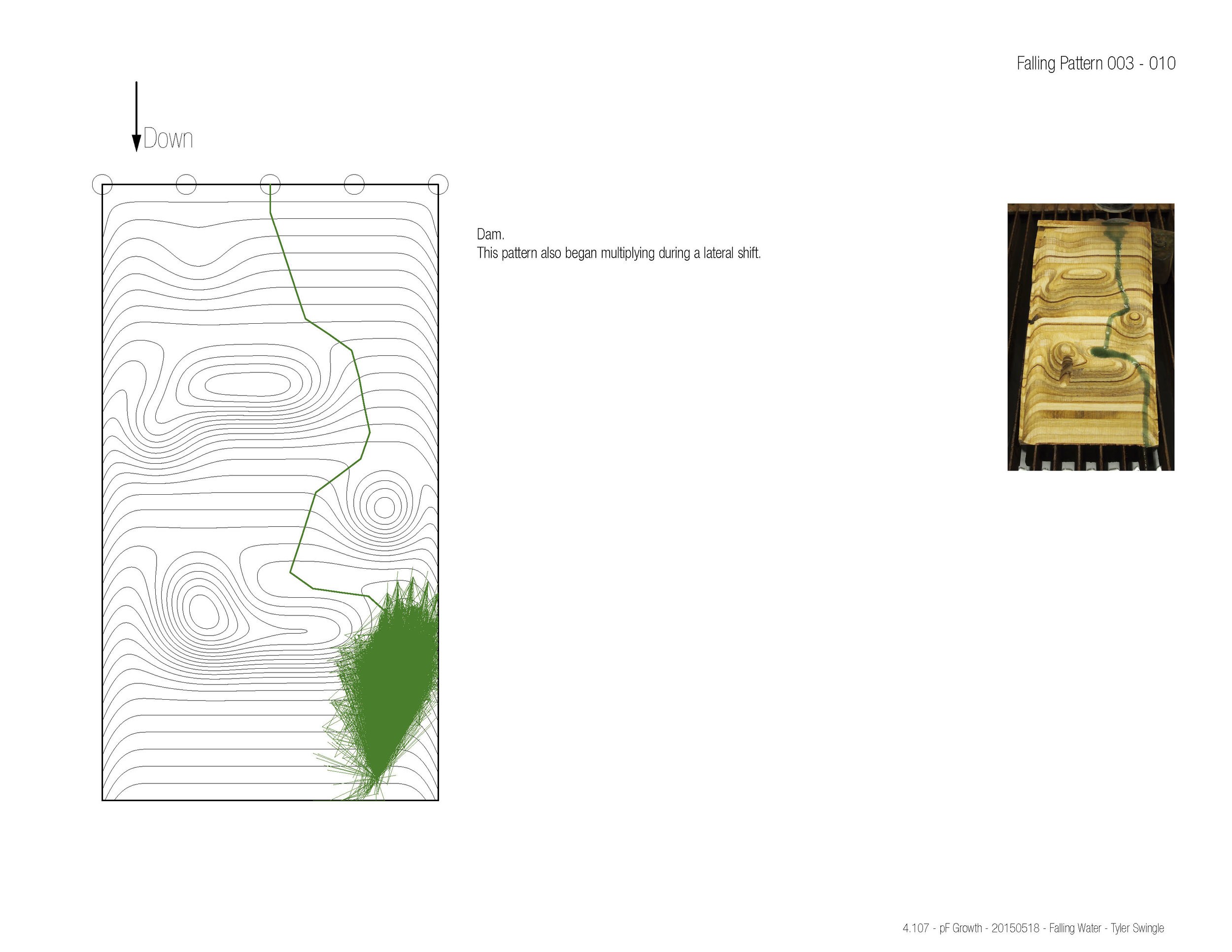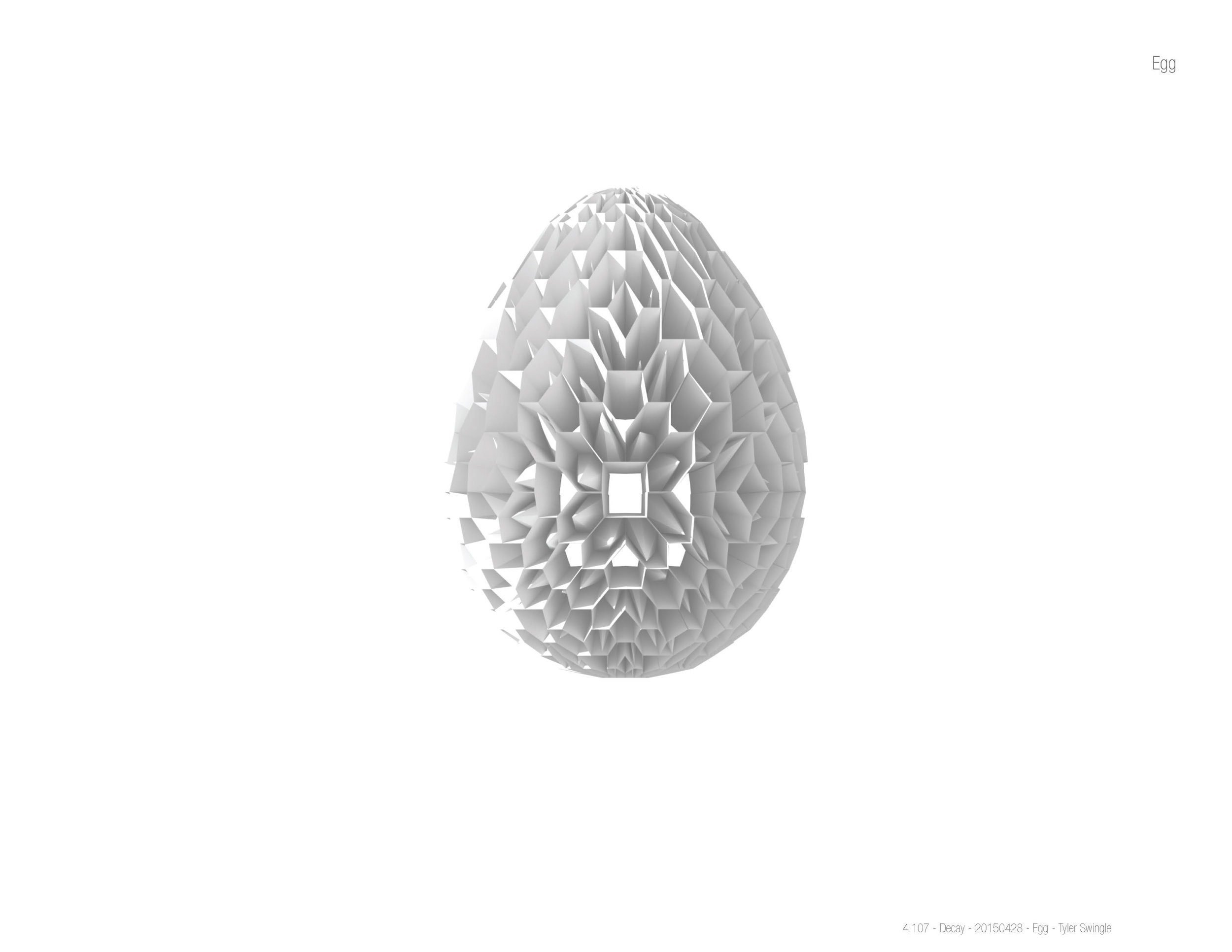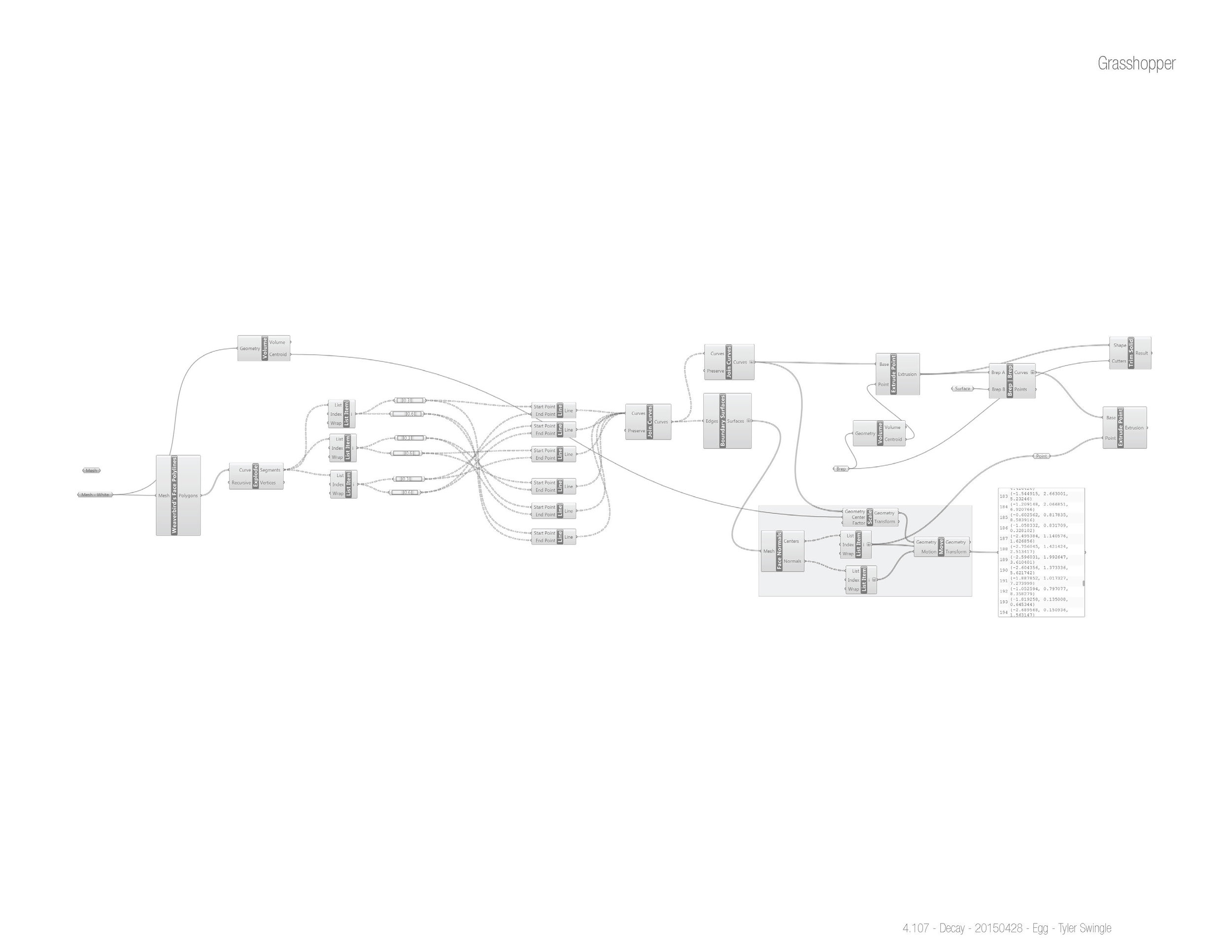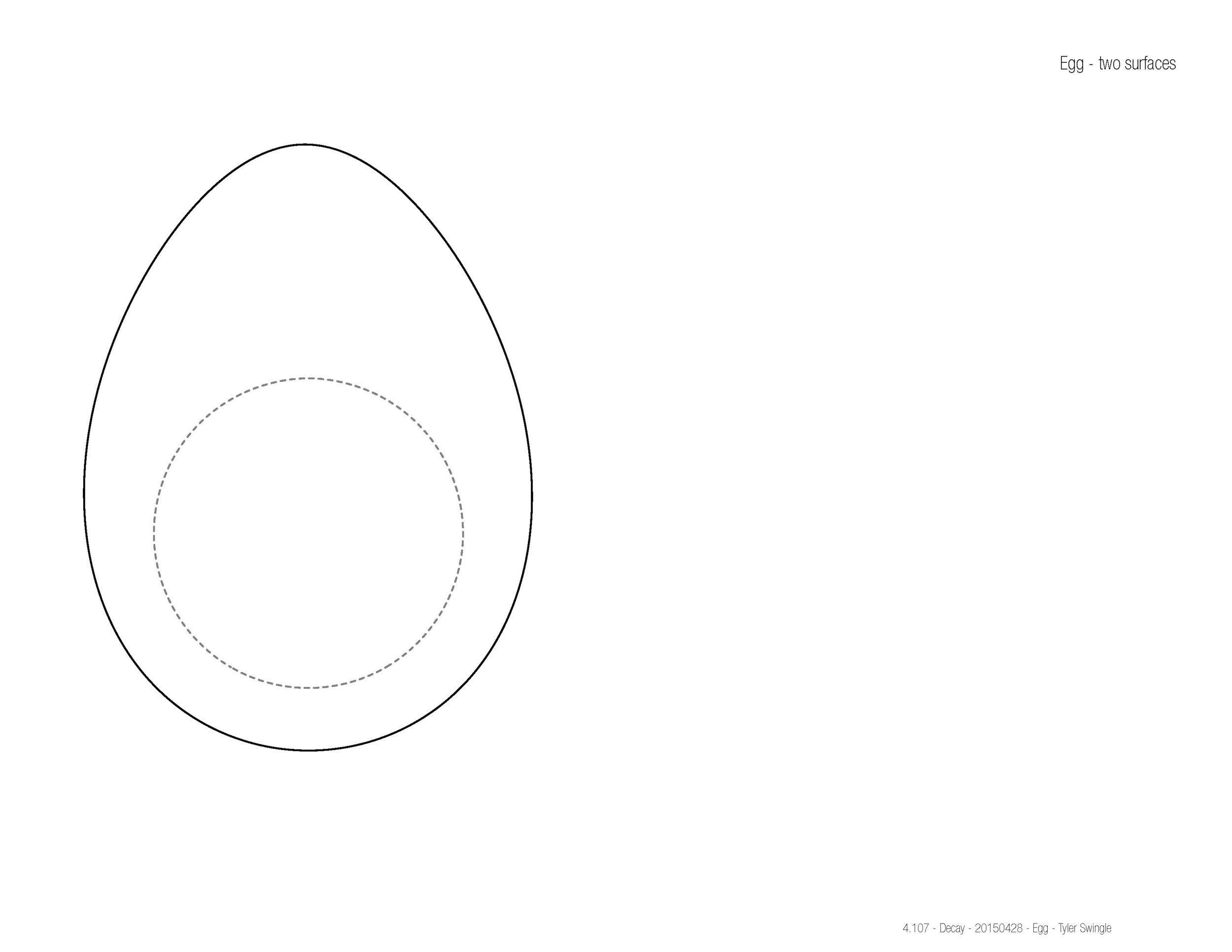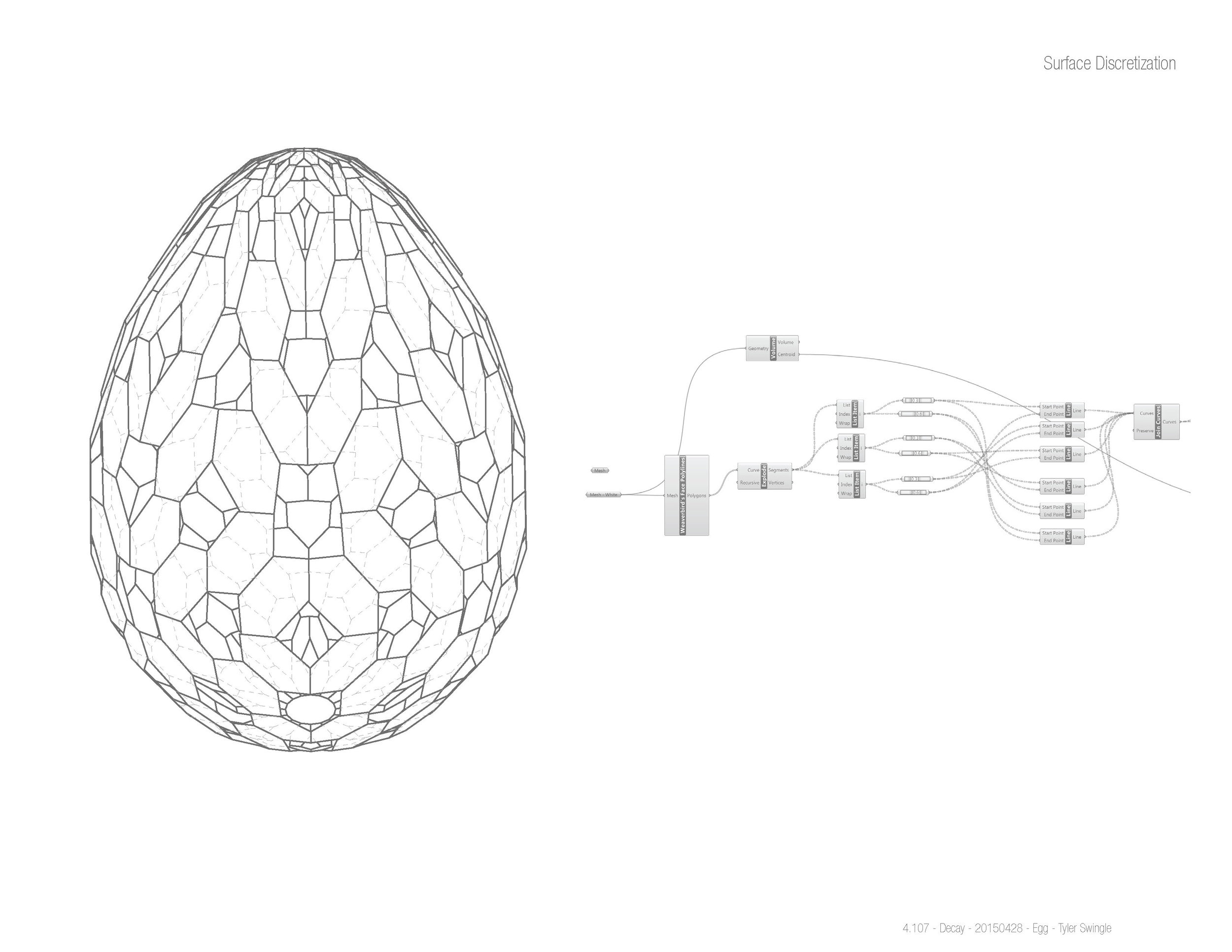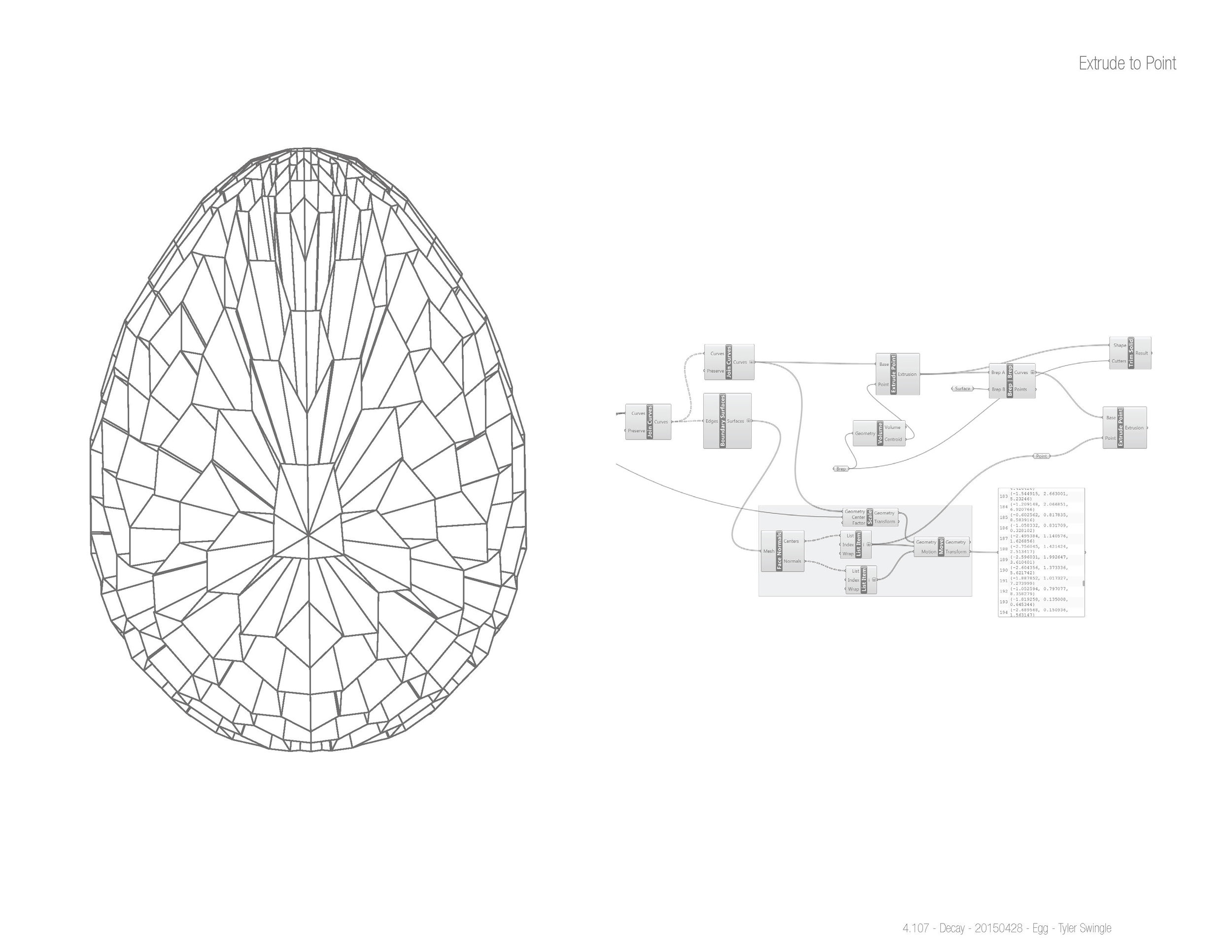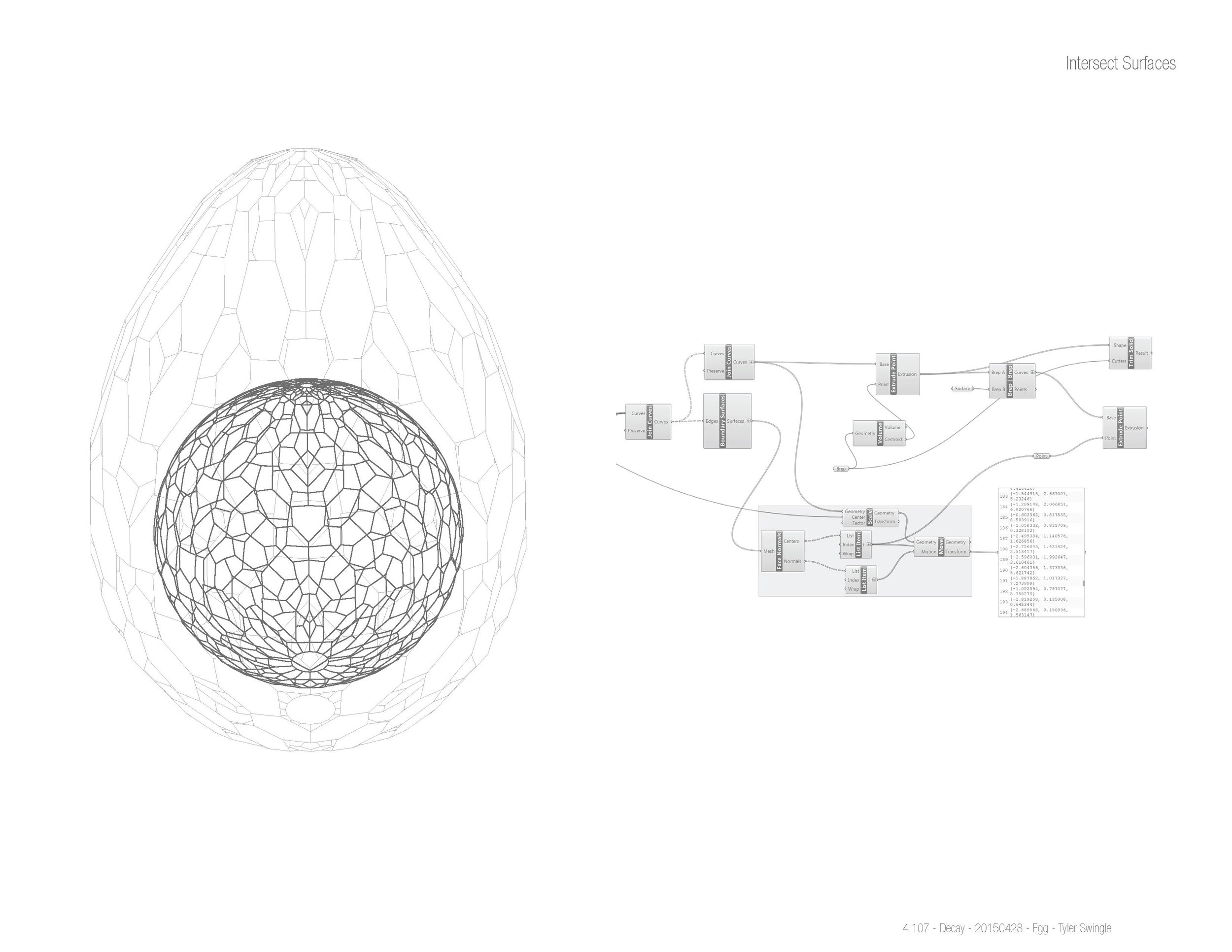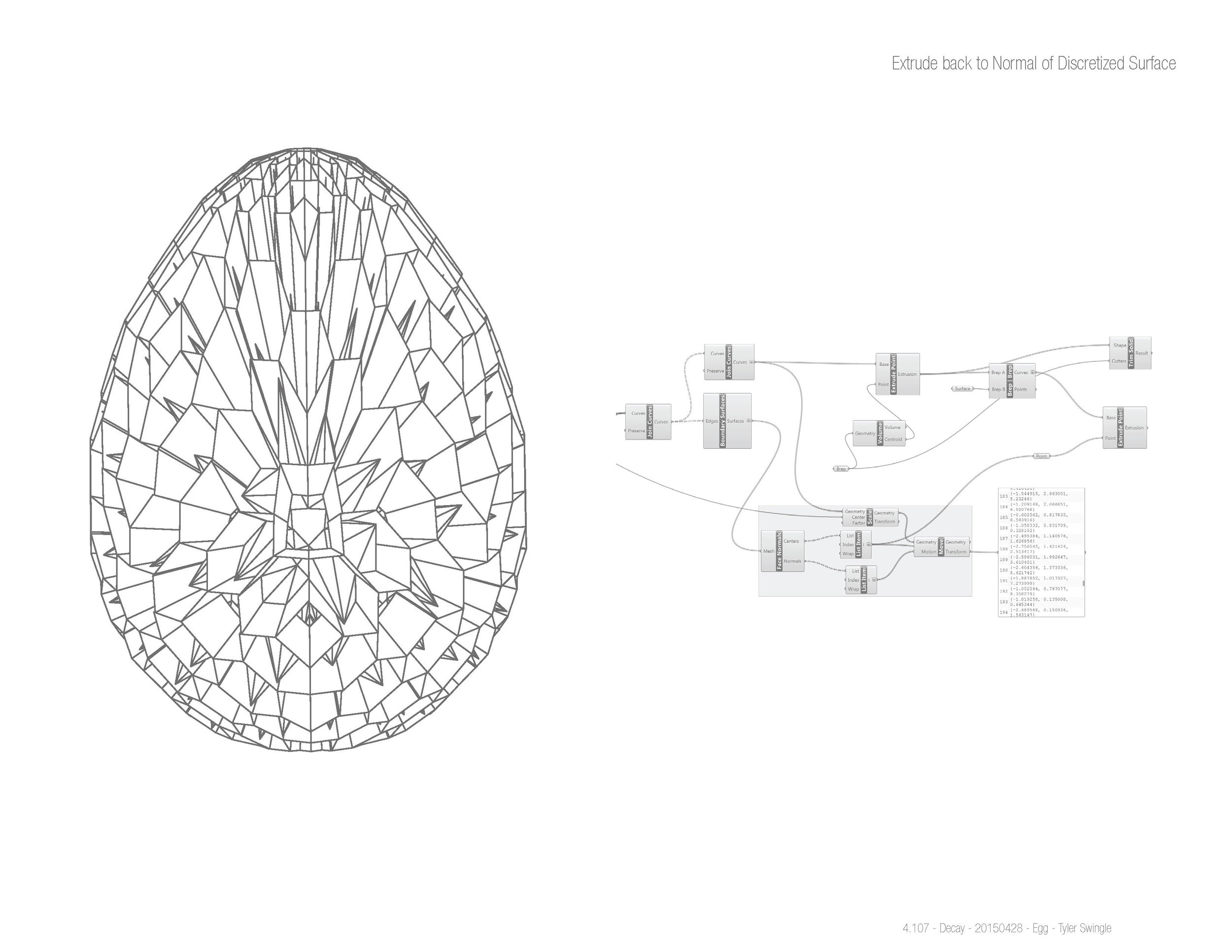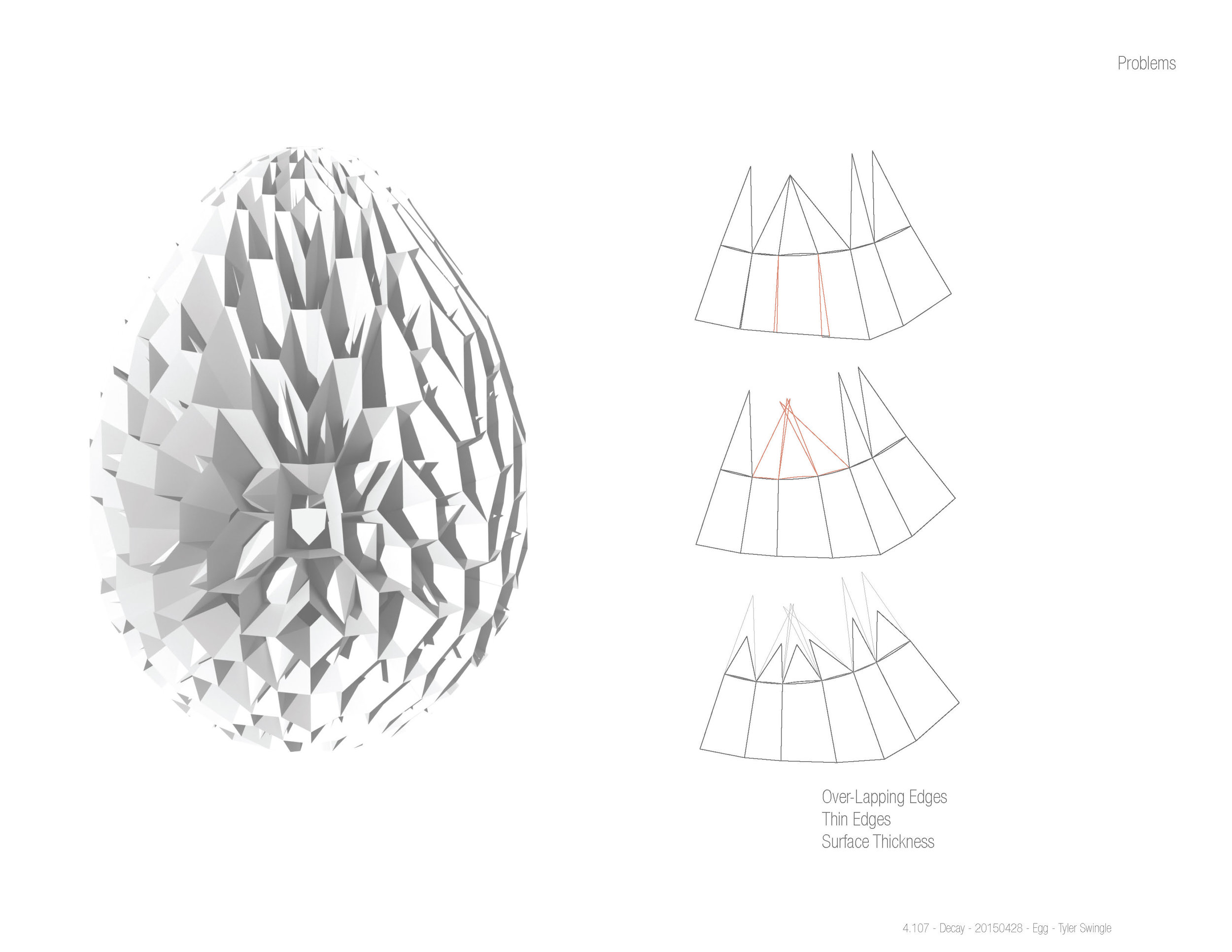Computation Coursework
reciprocity between digital and physical
bounce
This exercise focused on using computation to simulate an interaction between two materials. Using Kangaroo Solver Physics as the computation engine, the exercise attempts to predict the bend in the supporting steel rods under load-pressure. While the solver computation engine did generate the form of the wooden top piece, it was only produced to hold the steel rods in place and provide an aesthetic of gravity and weight.
top
This exercise focused on reclaiming control of the milling machine toolpaths. Instead of relying on pre-set machining techniques provided, this object is machined with custom toolpaths that are parametric. Depending on the end mill diameter used, the distance between toolpaths changes to account for step-over material removing and surface articulation. Generated as curves, the toolpaths were imported and referenced for 4-axis milling machine.
falling water
This exercise focused on using recursive computation to simulate the trajectory of falling water. Using the Anemone component, the computation predicts the downward movement of a point on any surface. With the same physical surface as the digital model, physical tests were produced as a reference for success of the computation.
decorated deconstructed deviled egg
This exercise focused on the decomposition of a familiar object. Classically known as the Egg, many designers and design students have engaged this problem. With the consideration of reciprocity between digital computation and physical making, this version of the egg identifies physical planar constraints based on an assembly method of constructing each cell out of one folded piece of material.
The text and images are edited excerpts from course 4 .107. For more information, including references, please contact the author.
